Tech News
Nothing Phone 3a Review: Design Over Everything?
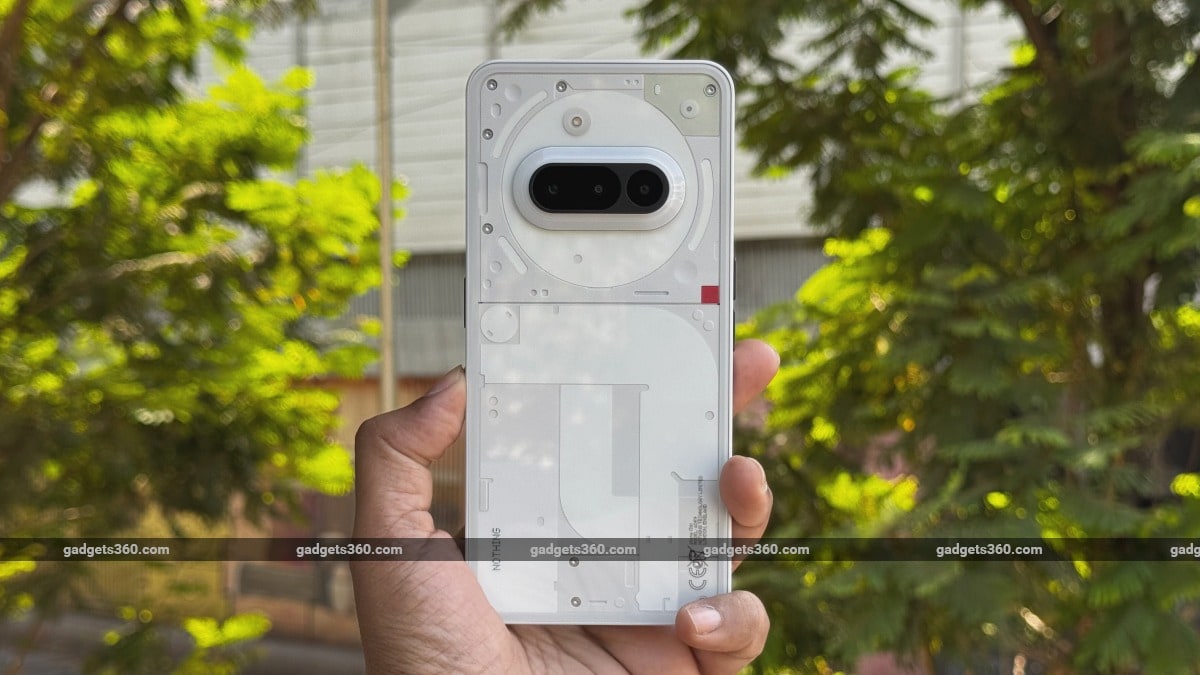
As of 2025, there are just a few smartphone brands that care about creative design. Gone are the days of refreshing and outlandish Nokia feature phone and smartphone designs that never failed to amaze us with their weird and wacky shapes and form factors. What excited me back then were the new and experimental designs (N-gage, Nokia 7600), where the focus was more on the experience and just doing something differently. Lately, Apple has single-handedly managed to turn every smartphone into a slab with two sheets of glass.
Even the most expensive foldables from premium brands appear like boring glass slabs. Apple’s iOS and Google’s Android may have paved the way for what seems to be an ideal software ecosystem. But we are now stuck with a bunch of boring icons, predictable animations, and transitions that feel far too basic. Clearly, they aren’t built to amaze us anymore; they simply exist to deliver and serve a bunch of apps.
Nothing as a brand stands out in this sea of, well, nothings (at least from a design standpoint). With a product philosophy based on design, it takes those gutsy decisions that big-name brands are too afraid to take, paving a path for a refreshing series of products that not only dare to appear different (in a tasteful manner) but also strive to remain that way several years into the game. With the latest Nothing Phone 3a, it’s evidently clear that its formula works and how!
Nothing Phone 3a Design: Notable improvements
- Dimensions – 163.5 x 77.5 x 8.3mm
- Weight – 201g
- Durability – IP64
The nostalgic and futuristic design philosophy between the Nothing Phone 2a and the new Phone 3a remains the same. It does not take too much effort to spot similarities between the two. The part at the top right corner, which is now made of metal, and the red square were also present on the Phone 2a.
![]()
Also obvious is that most of the design effort has gone into the new Phone 3a Pro model, which gets a better 3X telephoto camera instead of the 2X unit on the Phone 3a.
Compared to the Phone 3a Pro, the Phone 3a gets a new colour option called Blue. However, we received the standard White model for review.
Despite its design similarities with the Phone 2a, the 3a’s rear panel is now made of glass instead of plastic. It no longer is a dust magnet, and we barely noticed any fingerprints on the White unit we received.
![]()
Alongside the usual power button is also a new Essential Key, which I will go into detail about in the software section of this review.
The phone’s frame is made of polycarbonate and surely reminded us of the old HTC One X and the Nokia Lumias (1020 and 1520) because of its soft matte finish. The glass back has helped bump up the Phone 3a’s water and dust resistance to an IP64 rating, which is not much to talk about but is good to have. It’s good for splashes or sprays of water but not immersion. Like most manufacturers, it’s highly recommended to avoid this as much as possible, as damage due to water ingress is not covered under warranty.
The design of the Nothing Phone 3a isn’t fresh going by the company’s standards, but it surely stands out when placed alongside similarly priced smartphones from the mid-range with their done-and-dusted glass, faux leather or textured rear panels. Such levels of creativity are not even found in the premium segment.
![]()
I observed a few assembly issues that might be specific to my review unit.
Thankfully, these are down to the bits that go under the glass rear panel. The shiny metal part (as seen in the above image) at the top right corner is misaligned by a millimetre, as it seems to be rotated in the clockwise direction. The red box is also misaligned by very little but tilts in the opposite anticlockwise direction. We hope that future batches will address these issues.
Nothing Phone 3a Display: Excellent for its price
- Display size – 6.77-inch, 1,080 x 2,392 pixels, Full-HD+ (387 PPI)
- Display type – AMOLED, 60-90-120Hz
- Protection – Panda Glass
The Nothing Phone 3a has a display that is similar to that of the previous Phone 2a. It also has the same 120Hz refresh rate. It offers 1,300 nits of maximum brightness and 3,000 nits of peak brightness, which makes outdoor use problem-free. The display glass and the flexible AMOLED panel are both flat, which means you get excellent viewing angles minus the unnecessary reflections available on some competing models that offer quad-curved displays.
![]()
While impressive, the Nothing Phone 3a’s AMOLED display lacks HDR10+ certification
Colours are a tad bit saturated in the Alive mode for screen colour but appear natural with the Standard mode. My only problem with it is that it lacks an HDR10 or HDR10+ certification for video streaming, which is available on some competing smartphones in India.
Nothing Phone 3a Software: More art than smartphone UI
- Software version – Nothing OS 3.1
- Android version – Android 15
- Software commitment – 3 years of software, 6 years of security updates
Unlike most smartphone interfaces that feel like they have been designed for mass consumption and appeal, Nothing OS feels more hand-crafted and unique. It took me a day to recognise the gallery icon (until then, I assumed Google Photos was the default gallery app), but once I found it and placed it on the home screen, I was able to find it instantly all the time.
![]()
The widgets on the home screen have also been given their fair share of attention.
I absolutely dig the Date widget, which simply displays the current date with a bold font. The entertaining bit is that you get a tiny page folded in its bottom right corner every day, forcing you to swipe up the page and reveal the current day’s date (along with agenda items). It’s this minute attention to detail (even if it is manual) that made me notice and remember the current date.
The Do Not Disturb widget turns into a bold red when activated and stands out from the rest of the interface when active. The compass widget with a tap wakes up to point north like every good compass should. I just wished that it woke up with the phone and remained that way for a few seconds.
There is a fun News Reporter widget (which looks like an old radio speaker) that, upon tapping, wakes up and starts reading out the news (as per your preferences). Each bar of its speaker-like design goes from red to grey as the news is being read out. So, even if you pause it, you will know how many more hand-picked news items remain to be read out. The news selection and voice seem to be AI-generated or at least read out by a pre-defined AI-like voice. There’s even a page-turning sound after each byte, giving it a very old-school feel.
Coming to the basics, there’s a new Inter font, that can be used as the system font. This means that Inter will be forced in every third-party app that does not use its special font, making the UI and OS appear more consistent. Inter, just like the other fonts used in Nothing OS, somehow gel very well together.
![]()
And there are a few things that Nothing OS does a bit differently. The lock screen can have up to 4 widgets, which are scrollable once you lift the phone.
Nothing on OS has one of the coolest lock screens I have laid eyes on in recent times, and it is also shockingly customisable. However, tapping on a notification here will take you directly to the notifications tray. I initially didn’t like it (it’s not normal for Android phones), but I somehow got used to it a few days into the testing process.
Last but definitely not least is Nothing’s take on artificial intelligence (AI). Nothing executives keep speaking about how they want to do AI differently compared to being a content formatting tool or a meeting summariser, transcribing and the usual image editing/generation that everyone (including Apple) else has done to death (with or without success). Nothing’s take on AI is Essential Space, which could have something to do with Andy Rubin’s startup, absorbed by Nothing back in 2021.
![]()
When I started using Essential Space, I assumed it was just another attempt to push AI in your face. But the Essential Key (a physical button on the left side) made me curious enough to give it a shot.
Pressing down the Essential Key once takes a screenshot of what’s on your display, and then you are prompted to add typed notes about your current thought or press the record button for a voice note. Once recorded, press it once again to stop recording and then once again to save to Essential Space.
The intriguing part is how Essential Space digests and preps this data for recall. Currently, everything functions through the use of screenshots, but there are plans to integrate the camera with Essential Key to extract information from your surroundings for recall. There’s also a focused mode planned for future release that will let you record an entire meeting. After this, the tool will not only recognise speakers and transcribe information; it will also create to-dos based on the conversation. With the current implementation, I often find myself taking screenshots of things I need to remember and leaving notes on them. The app generated useful summaries for each screenshot and also created to-dos automatically based on what’s in the screenshot and the audio or text note it was tagged with.
The only downside of Essential Space is that you cannot take away your data. Hopefully, in the future, all of the data gathered by this feature will be available in files and folders backed up to the cloud, which can then be offloaded onto another OS if needed. Currently, I have find a folder that saves all the screenshots for Essential Space in the Internal Storage> Pictures> EssentialSpace folder.
Nothing Phone 3a Performance: Great, but far from the best
- Processor – Qualcomm Snapdragon 7s Gen 3, 2.5GHz, 4nm
- RAM – 8GB (LPDDR4X)
- Storage – 128/256GB (UFS 2.2)
Everyday software performance is pretty smooth despite Nothing’s rather controversial use of UFS 2.2 storage. The adaptive display panel smartly switches the refresh rate between 120-60Hz (depending on the screen brightness) when browsing through the software interface but is capped at 90Hz (or 90-60Hz) when opening native and third-party apps. Video and games are limited to 60Hz only.
Gaming performance was good, as I managed to run Call of Duty: Mobile at Very High graphics and frame rate. The display’s touch sampling rate of 480Hz, which is only available in Game Mode, seemed just about sufficient. I’ve experienced better touch sensitivity, especially while playing games on competing devices.
![]()
The vapour chamber cooling system sure does its job of maintaining the phone’s performance under stress
The phone warms up while playing games and gets hot when using the camera app outdoors; however, the camera app does not shut down nor show any warnings about limiting use. Indeed, the vapour cooling system was doing its job. However, the phone always struggled with processing images (it takes a second or two after capture), which is something I also noticed on the Realme P3 Pro (has the same chip). I also noticed some sluggishness when using the camera app, especially when switching between camera modes or switching cameras.
As far as benchmarks go, the Nothing Phone 3a performs as expected, as can be seen from the table below.
| Benchmarks | Nothing Phone 3a | Realme P3 Pro | Poco F6 | OnePlus Nord CE 4 |
|---|---|---|---|---|
| Chipset | Snapdragon 7s Gen 3 (4nm) | Snapdragon 7s Gen 3 (4nm) | Snapdragon 8s Gen 3 (4nm) | Snapdragon 7 Gen 3 (4nm) |
| Display resolution | FHD+ | 1.5K | 1.5K | FHD+ |
| AnTuTu v10 | 8,04,179 | 8,42,381 | 14,57,491 | 8,14,981 |
| PCMark Work 3.0 | 13,554 | 13,816 | 15,743 | 12,124 |
| Geekbench 6 Single | 1,158 | 1,185 | 1,835 | 1,154 |
| Geekbench 6 Multi | 3,255 | 3,209 | 4,693 | 3,000 |
| GFXB T-rex | 60 | 60 | 120 | 60 |
| GFXB Manhattan 3.1 | 55 | 39 | 112 | 60 |
| GFXB Car Chase | 28 | 21 | 71 | 39 |
| 3DM Slingshot Extreme OpenGL | 5,485 | 5,405 | 5,481 | Maxed Out |
| 3DM Slingshot | 6,954 | 6,871 | 4,655 | Maxed Out |
| 3DM Wild Life | 3,988 | 4,101 | Maxed Out | 5,423 |
| 3DM Wild Life Unlimited | 4,175 | 4,183 | 11,734 | 5,553 |
Nothing Phone 3a Cameras: Well above average
- Primary camera – 50-megapixel, OIS, f/1.5 aperture, AF
- Ultrawide camera – 8-megapixel, f/2.2 aperture, FF
- Telephoto camera – 50-megapixel, 2X, EIS, f/2.0 aperture, AF
- Selfie camera – 32-megapixel, f/2.2 aperture, FF
Note: Our camera samples and observations are based on the latest software update (received around March 10), and it brought about some drastic camera improvements versus the previous update the phone was tested with. The update (Asteroids-V3.1-250302-1856-IND) also added several new features, including the ability to create and share new camera filters/presets mentioned below.
Nothing brought the widest selection of cameras available in this segment or price point. While most smartphones pack a wide + ultra-wide combination, Nothing has managed a 2X telephoto camera, which is an interesting addition given the price point.
In a recent update, Nothing even added the ability to create, share or import someone else’s custom preset (via cube files), which is unique and could become popular in the Nothing community.
Another intriguing feature I like is the presets that can be applied when shooting. These presets are not just colour, hue, or saturation adjustments; they also define which camera mode (even video) and what magnification can be used when selected. You can also add advanced settings, like keeping the flash on, image quality (binned or full resolution), and even turning the grid on or off, which is brilliant! You can pin these presets to your home screen as a widget and launch directly into a particular custom preset.
Nothing Phone 3a ultrawide camera samples (tap images to expand)
Coming to the cameras, the ultra-wide camera is the weakest one of the three, but it is by no means bad. It offers decent performance for its price point, producing photos that are a bit low on detail but pack good dynamic range, ensuring enough detail in the darker areas. Lens barrel distortion is under control as well. Of course, all of this mainly applies to daylight shooting, as the results captured at night appear soft and look like paintings.
Nothing Phone 3a primary camera samples (tap images to expand)
The primary camera is indeed the best and most capable of the three. Unlike the Nothing Phone 3a, it’s the only one with optical image stabilisation (OIS). Photographs captured in all shooting scenarios come out sharp and pack plenty of resolved detail. The primary camera also offers the best colour accuracy among the three, even though the photos appear a bit saturated compared to the actual scene.
Nothing Phone 3a 2X telephoto camera samples (tap images to expand)
The telephoto camera feeds on light. The colours it produces are a bit more saturated than the primary camera’s; it also adds a bit of sharpening to images, which can appear excessive when shooting portrait photos. Provided there’s good light, you get plenty of detail, and some crispy captures with good natural bokeh. The accuracy of edge detection varies depending on the complexity of your subject’s hairstyle.
You begin to notice a drop in image quality under artificial light or when shooting against a source of light. When using portrait mode, the camera tries its best, but the absence of OIS does not allow it to pick up enough details from faces. Your subjects will also need to be perfectly still in such lighting conditions.
The telephoto camera performs better when not using the dedicated Portrait mode. 4X lossless samples are usable, but you will notice a drop in detail when you pixel peep. Despite its daylight capabilities, those who plan to use Portrait Mode often are indeed better off with the Phone 3a Pro‘s 3X telephoto camera, which is optically stabilised.
Selfies pack good detail and accurate edge detection in daylight but come out average in low light (tap image to expand)
Video recordings are indeed an area that Nothing needs to work on. For a low-end, mid-range smartphone, it meets expectations by offering good stabilisation and decent detail when shooting video at 1080p and 4K. However, this only applies when shooting in broad daylight, as low-light video capture is quite poor.
Consistency in terms of colour reproduction between the three cameras is something Nothing still needs to work on. Of course, we’re discussing a Rs. 25,000 phone, but it would be great if Nothing could figure it out with future updates. All camera samples were clicked with the Auto-tone feature turned off, as it just added unnecessary colour saturation.
Nothing Phone 3a Battery:
- Battery capacity – 5,000mAh
- Wired charging – 50W
- Charger in the box – No
Despite having a slightly smaller battery than most competing smartphones, nothing has managed to squeeze the most out of it, thanks to good software optimisation. While the phone lasted me a whole day and a bit longer with heavy usage (calls, messaging, camera usage, and a bit of gaming), it managed a good score of 28 hours and 37 minutes, which is better than what the Realme P3 Pro’ manages with a higher-capacity battery.
Our PCMark Work battery test, which replicates regular smartphone usage scenarios, running the battery down to 20 percent, lasted a solid 17 hours and 40 minutes of continuous usage. Again, the figure is a bit surprising, as the Realme P3 Pro, with the same chipset, an AMOLED display, and a larger 6,000mAh battery, managed 10 minutes less.
Charging speeds are relatively slow at 50W, given that most phones in this segment offer better. In our testing, we managed to charge the Nothing Phone 3a to 46 percent in 30 minutes and complete the charging process in 1 hour and 26 minutes when plugged into a 100W GaN charger. For comparison, Realme’s P3 Pro charged a bigger 6,000mAh battery in 1 hour and 6 minutes.
Nothing Phone 3a Verdict
With its focus on design and balanced hardware choices, Nothing certainly has come up with a winner in the mid-range (budget in global markets). It beautifully combines hardware, cosmetic design, and software. And it’s even more applause-worthy, given that so much effort has been put into a low-end mid-ranger!
That said, the new camera hardware is an upgrade over the previous model. While it works alright, Nothing should work on delivering more camera updates to improve its performance even further.
Indeed, there are better performance-oriented alternatives like the Poco F6 (Review), and spec-heavy options like the OnePlus Nord CE 4 (Review) and the recently launched “flagship killer” iQOO Neo 10R (First Impressions) in India. But when it comes to design and software execution, Nothing’s Phone 3a is a phone I can pick up and use when I get bored of other smartphones. It has the software that I want to use on every Android smartphone.
Tech News
व्हाट्सएप संदेशों और मीडिया के लिए स्टिकर प्रतिक्रियाओं का परीक्षण शुरू करता है

WhatsApp एक ऐसी सुविधा पर काम कर रहा है जो उपयोगकर्ताओं को स्टिकर का उपयोग करके संदेशों और मीडिया पर प्रतिक्रिया करने की अनुमति देता है। प्लेटफ़ॉर्म पहले से ही इमोजी प्रतिक्रियाओं का समर्थन करता है, जिससे उपयोगकर्ताओं को ऐप पर किसी भी समर्थित इमोजी का चयन करके एक संदेश की ओर अपनी भावनाओं को व्यक्त करने में सक्षम बनाता है। अब, व्हाट्सएप कथित तौर पर अपने एंड्रॉइड ऐप पर संदेशों और मीडिया फ़ाइलों के लिए “स्टिकर प्रतिक्रिया” जोड़ रहा है। इस सुविधा को एंड्रॉइड बीटा एंड्रॉइड 2.25.13.23 अपडेट के लिए नवीनतम व्हाट्सएप पर स्पॉट किया गया है, जो Google Play Beta प्रोग्राम के माध्यम से उपलब्ध है, और परीक्षक उस सुविधा को आज़मा नहीं सकते हैं क्योंकि यह अभी भी विकास में है।
व्हाट्सएप संदेशों पर प्रतिक्रिया करने के लिए अधिक तरीके जोड़ रहा है
एक के अनुसार ब्लॉग भेजा फ़ीचर ट्रैकर Wabetainfo द्वारा, व्हाट्सएप जल्द ही लोगों को स्टिकर का उपयोग करके संदेशों और मीडिया पर प्रतिक्रिया करने की अनुमति देगा। यह उपयोगकर्ताओं को एक संदेश टाइप किए बिना, किसी संदेश के बारे में जल्दी से एक प्रतिक्रिया साझा करने की अनुमति देगा। नई सुविधा कथित तौर पर स्टिकर कीबोर्ड में उपलब्ध स्टिकर की पूरी श्रृंखला का समर्थन करेगी, जिसमें व्हाट्सएप के आधिकारिक स्टिकर स्टोर से डाउनलोड किया गया था।
![]()
व्हाट्सएप स्टिकर प्रतिक्रियाएं
फोटो क्रेडिट: wabetainfo
फीचर ट्रैकर के अनुसार, उपयोगकर्ता बाहरी ऐप्स के माध्यम से आयातित तृतीय-पक्ष स्टिकर का उपयोग करने में भी सक्षम होंगे। एनिमेटेड स्टिकर को प्रतिक्रियाओं के रूप में समर्थित किया जाएगा, इसमें लोटी फ्रेमवर्क का उपयोग करके डिज़ाइन किए गए हैं। एनिमेटेड स्टिकर को शामिल करके, व्हाट्सएप का उद्देश्य पारंपरिक स्थैतिक इमोजी की तुलना में अधिक अभिव्यंजक और गतिशील दृश्यों के साथ प्रतिक्रियाओं को बढ़ाना है।
इस सुविधा को व्हाट्सएप बीटा 2.25.13.23 पर विकास में देखा गया था। के लिए एंड्रॉइड स्मार्टफोन, और यह वर्तमान में परीक्षण करने के लिए अनुपलब्ध है क्योंकि यह अभी भी कार्यों में है। संदेशों और मीडिया के लिए स्टिकर प्रतिक्रियाएं वर्तमान में प्रतिद्वंद्वी मैसेजिंग ऐप imessage पर समर्थित हैं।
इसके अलावा, रिपोर्ट में एक स्क्रीनशॉट शामिल है जो स्टिकर रिएक्शन फीचर दिखाती है, जिससे हमें इस बात की एक झलक मिलती है कि जब यह रोल आउट करना शुरू होता है तो यह कैसा दिख सकता है। स्क्रीनशॉट के अनुसार, लंबे समय से दबा देने वाला संदेश एक स्टिकर के साथ छह उपलब्ध इमोजी के साथ पॉप-अप मेनू दिखाएगा। वर्तमान में, संदेश प्रतिक्रियाएं स्मार्टफोन पर उपलब्ध सभी इमोजी तक सीमित हैं।
स्टिकर प्रतिक्रियाएं कार्यक्षमता अभी तक बीटा परीक्षकों के लिए उपलब्ध नहीं है और अंतिम रिलीज से पहले बदल सकती है। यह पहले बीटा परीक्षकों के लिए रोल आउट करने की उम्मीद है, इससे पहले कि यह सभी उपयोगकर्ताओं को स्थिर चैनल पर उपलब्ध कराया जाए।
Tech News
IQOO Z10 टर्बो प्रो स्नैपड्रैगन 8S जनरल 4 SOC के साथ IQOO Z10 टर्बो के साथ लॉन्च किया गया: मूल्य, विनिर्देश
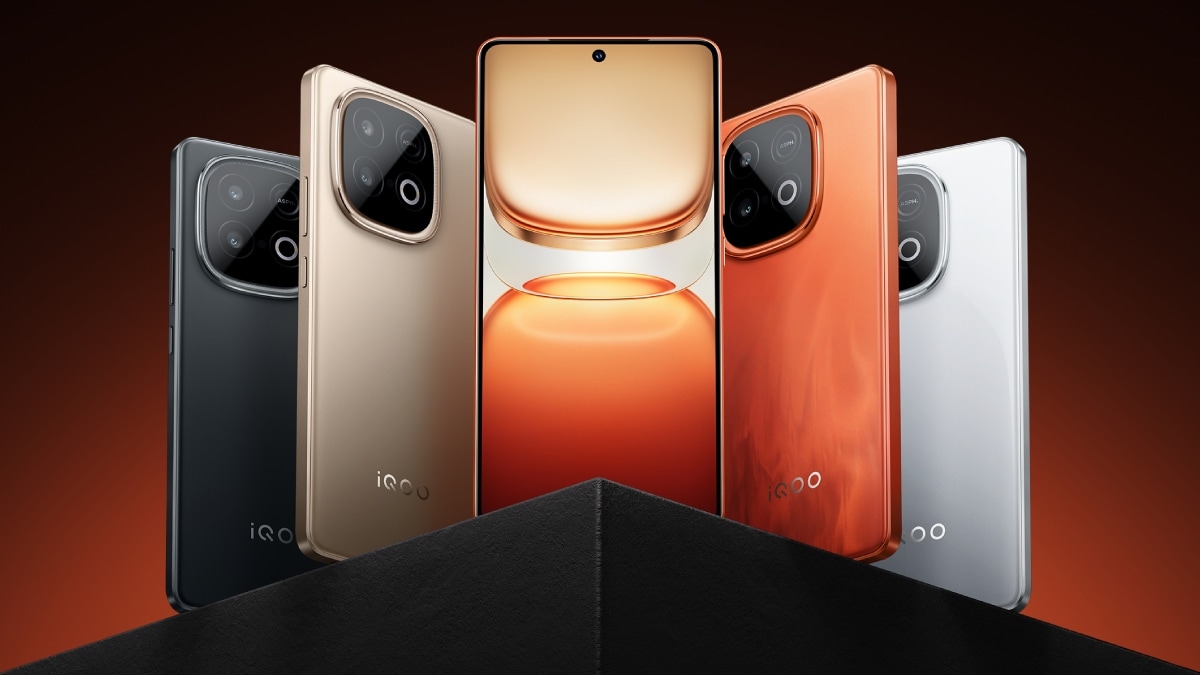
IQOO Z10 टर्बो प्रो और IQOO Z10 टर्बो हैंडसेट सोमवार को चीन में लॉन्च किए गए थे। ये हैंडसेट 50-मेगापिक्सल के रियर कैमरे से लैस हैं और इसमें 16-मेगापिक्सल का सेल्फी कैमरा है। उनके पास एक समर्पित Q1 गेमिंग चिप है और 144Hz डिस्प्ले तक स्पोर्ट है। मानक IQOO Z10 टर्बो सीरीज़ मॉडल में एक मीडियाटेक डिमिस्टेंस 8400 SOC है, जबकि Z10 टर्बो प्रो वेरिएंट एक स्नैपड्रैगन 8S जनरल 4 चिपसेट पर चलता है। वे Android 15 के साथ शीर्ष पर मूल 5 त्वचा के साथ जहाज करते हैं। दोनों फोन में धूल और छप प्रतिरोध के लिए IP65 रेटिंग है।
IQOO Z10 टर्बो प्रो, IQOO Z10 टर्बो मूल्य
iqoo Z10 टर्बो प्रो चीन में कीमत 12GB + 256GB विकल्प के लिए CNY 1,999 (लगभग 23,400 रुपये) से शुरू होती है, जबकि 16GB + 256GB वेरिएंट की लागत CNY 2,199 (लगभग 25,800 रुपये) है। 12GB + 512GB और 16GB + 512GB कॉन्फ़िगरेशन क्रमशः CNY 2,399 (लगभग 28,100 रुपये) और CNY 2,599 (लगभग 30,500 रुपये) की कीमत हैं।
इस बीच, की कीमत IQOO Z10 टर्बो 12GB + 256GB संस्करण के लिए CNY 1,799 (लगभग 21,100 रुपये) से शुरू होता है। 16GB + 256GB, 12GB + 512GB और 16GB + 512GB RAM और स्टोरेज कॉन्फ़िगरेशन CNY 1,999 (लगभग 23,400 रुपये), CNY 2,199 (लगभग 25,800 रुपये) और CNY 2,399 (लगभग 28,100 रुपये) पर सूचीबद्ध हैं।
दोनों फोन को बर्न, डेजर्ट कलर, सीज़ ऑफ क्लाउड्स व्हाइट और स्टार्स स्काई ब्लैक (चीनी से अनुवादित) कोलोवेज में पेश किया जाता है। वे देश में खरीद के लिए उपलब्ध हैं के जरिए विवो चीन ई की दुकान।
IQOO Z10 टर्बो प्रो, IQOO Z10 टर्बो विनिर्देश
दोनों IQOO Z10 टर्बो और IQOO Z10 टर्बो प्रो स्पोर्ट 6.78-इंच 1.5K (1,260 × 2,800 पिक्सेल) 144Hz रिफ्रेश दर के साथ, 3,000Hz टच सैंपलिंग दर तक। डिस्प्ले को 4,400 एनआईटीएस पीक ब्राइटनेस, 4,320Hz PWM डिमिंग रेट, HDR10+ सपोर्ट के साथ -साथ SGS कम नीले प्रकाश और कम फ़्लिकर सर्टिफिकेशन का समर्थन करने का दावा किया जाता है।
नियमित IQOO Z10 टर्बो एक 4NM OCTA-CORE MEDIATEK DYMENTIAL 8400 SOC द्वारा संचालित है, जबकि Z10 टर्बो प्रो में एक स्नैपड्रैगन 8S जनरल 4 चिपसेट है। फोन में 16GB तक LPDDR5X रैम और 512GB तक UFS4.1 ऑनबोर्ड स्टोरेज है। वे एंड्रॉइड 15-आधारित ओरिजिनोस 5 पर चलते हैं।
ऑप्टिक्स के लिए, दोनों IQOO Z10 टर्बो सीरीज़ स्मार्टफोन में 50-मेगापिक्सेल सोनी LYT-600 प्राइमरी रियर कैमरा और 16-मेगापिक्सल का फ्रंट कैमरा है। वेनिला हैंडसेट में 2-मेगापिक्सल सेकेंडरी डेप्थ सेंसर है, जबकि प्रो वेरिएंट में 8-मेगापिक्सल अल्ट्रावाइड कैमरा है।
IQOO Z10 टर्बो 7,620mAh की बैटरी द्वारा 90W वायर्ड फास्ट चार्जिंग सपोर्ट के साथ समर्थित है। इस बीच, IQOO Z10 टर्बो 10 प्रो 120W वायर्ड फास्ट चार्जिंग के लिए समर्थन के साथ 7,000mAh सेल पैक करता है। वे सुरक्षा के लिए इन-डिस्प्ले फिंगरप्रिंट सेंसर से लैस हैं, साथ ही इन्फ्रारेड सेंसर भी हैं।
कनेक्टिविटी विकल्पों में 5 जी, डुअल 4 जी वीओएलटीई, वाई-फाई, ब्लूटूथ 6.0, जीपीएस, बीडौ, ग्लोनास, गैलीलियो, क्यूजेडएसएस, एनएफसी और एक यूएसबी टाइप-सी 2.0 पोर्ट शामिल हैं। दोनों हैंडसेट में एक IP65 धूल और स्प्लैश-प्रतिरोधी रेटिंग है। उनके पास 163.72 × 75.88 × 8.09 मिमी के आयाम हैं, और बेस मॉडल का वजन 212G है, जबकि टर्बो प्रो वेरिएंट का वजन 206G है।
Tech News
Google ने अगले महीने I/O 2025 डेवलपर सम्मेलन से पहले ‘Android Show’ को होस्ट किया
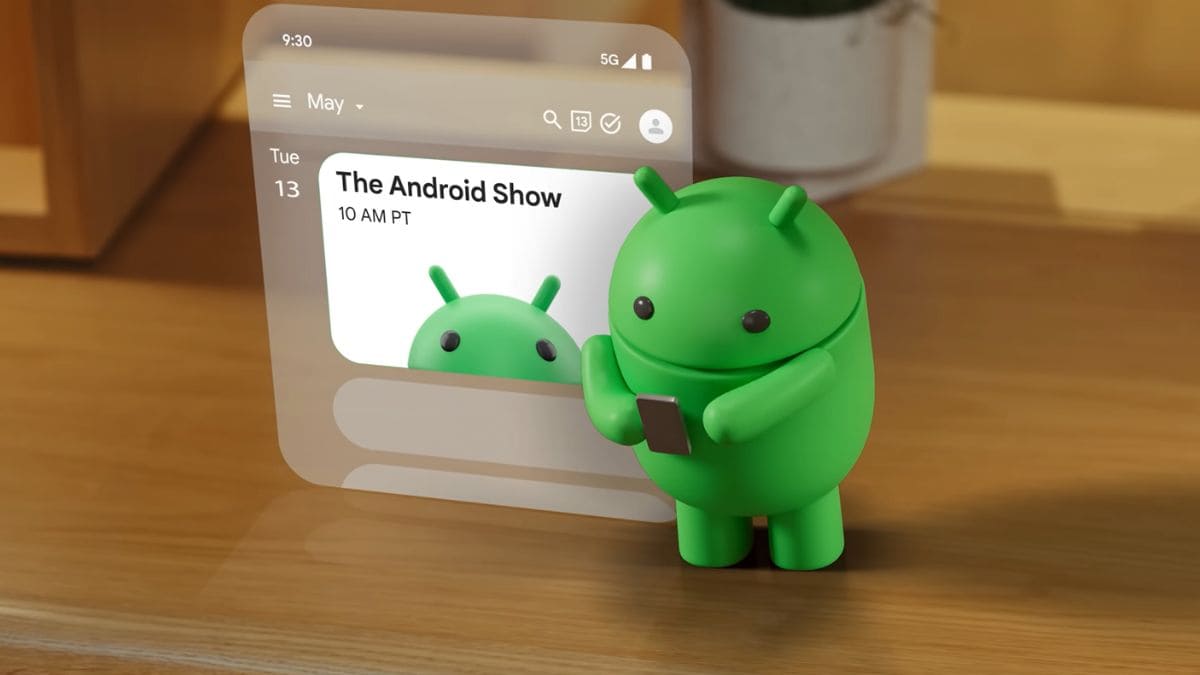
गूगल सोमवार को I/O 2025 से एक सप्ताह पहले प्रसारण के लिए सेट किए गए Android अपडेट के लिए समर्पित एक नए कार्यक्रम की घोषणा की, इसका वार्षिक डेवलपर सम्मेलन, बंद हो गया। एंड्रॉइड शो: I/O संस्करण को डब किया गया, नई श्रृंखला के अगले पुनरावृत्ति से संबंधित कई घोषणाओं की मेजबानी करेगी एंड्रॉइड ऑपरेटिंग सिस्टम (OS)-Android 16। इस शो की पुष्टि 13 मई के लिए की जाती है, I/O 2025 से एक सप्ताह पहले 20 मई को शुरू होता है। जबकि Google के पास वर्ष के दौरान एंड्रॉइड के लिए मिनट के परिवर्धन की घोषणा करने का एक ट्रैक रिकॉर्ड है, टेंटपोल फीचर्स आमतौर पर Google I/O के लिए आरक्षित होते हैं, जिससे एंड्रॉइड शो माउंटेन व्यू-आधारित तकनीकी जाइंट के लिए पहला शो होता है।
Google Android Show: I/O संस्करण तिथि
गूगल कहते हैं Android Show: I/O संस्करण मंगलवार, 13 मई को सुबह 10:00 बजे Pt (10:30 PM IST) पर होगा। एंड्रॉइड इकोसिस्टम के अध्यक्ष समीर समैट, बाकी एंड्रॉइड टीम के साथ, YouTube पर एक लाइवस्ट्रीम आयोजित करेंगे, जहां एंड्रॉइड से संबंधित घोषणाओं की एक श्रृंखला बनाने की उम्मीद है।
हालांकि वास्तव में जो घोषणा की जाएगी, वह अज्ञात है, यह शो माउंटेन व्यू-आधारित टेक दिग्गज के अनुसार, I/O डेवलपर सम्मेलन शुरू होने से पहले नवीनतम नवाचारों और अनुभवों में एक गहरी गोता लगाने का अवसर पेश करेगा।
Google द्वारा भेजे गए एक मीडिया नोट के अनुसार और देखा एंड्रॉइड अथॉरिटी द्वारा, Google के समैट कहते हैं, “एंड्रॉइड के साथ नया क्या है, हमेशा Google I/O का एक बड़ा हिस्सा रहा है, और हम जानते हैं कि लोग उत्साहित हैं! इसीलिए हम इस साल के I/O सीज़न को एक विशेष गहरे गोता के साथ किक कर रहे हैं – Android Show: I/o संस्करण। हम अब आपको I/O के लिए तैयार होने के लिए समाचार साझा करेंगे, जहां और भी अधिक विशेष घोषणाएं हैं।”
इस दौरान, Google I/O 2025 मंगलवार, 20 मई और बुधवार, 21 मई को आयोजित दो दिवसीय कार्यक्रम होने वाला है। पिछले रुझानों के अनुसार, यह अल्फाबेट के सीईओ सुंदर पिचाई द्वारा एक मुख्य वक्ता के साथ शुरू होने की उम्मीद है। प्रमुख उत्पादों और सॉफ्टवेयर, जैसे कि एंड्रॉइड 16 और मिथुन अपडेट, जो कैलेंडर वर्ष में पेश किए जाएंगे, दिखाए जाने की संभावना है।
नवीनतम के लिए तकनीकी समाचार और समीक्षागैजेट्स 360 पर फॉलो करें एक्स, फेसबुक, WhatsApp, धागे और Google समाचार। गैजेट्स और टेक पर नवीनतम वीडियो के लिए, हमारी सदस्यता लें YouTube चैनल। यदि आप शीर्ष प्रभावकों के बारे में सब कुछ जानना चाहते हैं, तो हमारे इन-हाउस का अनुसरण करें कौन है पर Instagram और YouTube।
Tech News
IQOO Z10 टर्बो प्रो स्नैपड्रैगन 8S जनरल 4 SOC के साथ IQOO Z10 टर्बो के साथ लॉन्च किया गया: मूल्य, विनिर्देश

IQOO Z10 टर्बो प्रो और IQOO Z10 टर्बो हैंडसेट सोमवार को चीन में लॉन्च किए गए थे। ये हैंडसेट 50-मेगापिक्सल के रियर कैमरे से लैस हैं और इसमें 16-मेगापिक्सल का सेल्फी कैमरा है। उनके पास एक समर्पित Q1 गेमिंग चिप है और 144Hz डिस्प्ले तक स्पोर्ट है। मानक IQOO Z10 टर्बो सीरीज़ मॉडल में एक मीडियाटेक डिमिस्टेंस 8400 SOC है, जबकि Z10 टर्बो प्रो वेरिएंट एक स्नैपड्रैगन 8S जनरल 4 चिपसेट पर चलता है। वे Android 15 के साथ शीर्ष पर मूल 5 त्वचा के साथ जहाज करते हैं। दोनों फोन में धूल और छप प्रतिरोध के लिए IP65 रेटिंग है।
IQOO Z10 टर्बो प्रो, IQOO Z10 टर्बो मूल्य
iqoo Z10 टर्बो प्रो चीन में कीमत 12GB + 256GB विकल्प के लिए CNY 1,999 (लगभग 23,400 रुपये) से शुरू होती है, जबकि 16GB + 256GB वेरिएंट की लागत CNY 2,199 (लगभग 25,800 रुपये) है। 12GB + 512GB और 16GB + 512GB कॉन्फ़िगरेशन क्रमशः CNY 2,399 (लगभग 28,100 रुपये) और CNY 2,599 (लगभग 30,500 रुपये) की कीमत हैं।
इस बीच, की कीमत IQOO Z10 टर्बो 12GB + 256GB संस्करण के लिए CNY 1,799 (लगभग 21,100 रुपये) से शुरू होता है। 16GB + 256GB, 12GB + 512GB और 16GB + 512GB RAM और स्टोरेज कॉन्फ़िगरेशन CNY 1,999 (लगभग 23,400 रुपये), CNY 2,199 (लगभग 25,800 रुपये) और CNY 2,399 (लगभग 28,100 रुपये) पर सूचीबद्ध हैं।
दोनों फोन को बर्न, डेजर्ट कलर, सीज़ ऑफ क्लाउड्स व्हाइट और स्टार्स स्काई ब्लैक (चीनी से अनुवादित) कोलोवेज में पेश किया जाता है। वे देश में खरीद के लिए उपलब्ध हैं के जरिए विवो चीन ई की दुकान।
IQOO Z10 टर्बो प्रो, IQOO Z10 टर्बो विनिर्देश
दोनों IQOO Z10 टर्बो और IQOO Z10 टर्बो प्रो स्पोर्ट 6.78-इंच 1.5K (1,260 × 2,800 पिक्सेल) 144Hz रिफ्रेश दर के साथ, 3,000Hz टच सैंपलिंग दर तक। डिस्प्ले को 4,400 एनआईटीएस पीक ब्राइटनेस, 4,320Hz PWM डिमिंग रेट, HDR10+ सपोर्ट के साथ -साथ SGS कम नीले प्रकाश और कम फ़्लिकर सर्टिफिकेशन का समर्थन करने का दावा किया जाता है।
नियमित IQOO Z10 टर्बो एक 4NM OCTA-CORE MEDIATEK DYMENTIAL 8400 SOC द्वारा संचालित है, जबकि Z10 टर्बो प्रो में एक स्नैपड्रैगन 8S जनरल 4 चिपसेट है। फोन में 16GB तक LPDDR5X रैम और 512GB तक UFS4.1 ऑनबोर्ड स्टोरेज है। वे एंड्रॉइड 15-आधारित ओरिजिनोस 5 पर चलते हैं।
ऑप्टिक्स के लिए, दोनों IQOO Z10 टर्बो सीरीज़ स्मार्टफोन में 50-मेगापिक्सेल सोनी LYT-600 प्राइमरी रियर कैमरा और 16-मेगापिक्सल का फ्रंट कैमरा है। वेनिला हैंडसेट में 2-मेगापिक्सल सेकेंडरी डेप्थ सेंसर है, जबकि प्रो वेरिएंट में 8-मेगापिक्सल अल्ट्रावाइड कैमरा है।
IQOO Z10 टर्बो 7,620mAh की बैटरी द्वारा 90W वायर्ड फास्ट चार्जिंग सपोर्ट के साथ समर्थित है। इस बीच, IQOO Z10 टर्बो 10 प्रो 120W वायर्ड फास्ट चार्जिंग के लिए समर्थन के साथ 7,000mAh सेल पैक करता है। वे सुरक्षा के लिए इन-डिस्प्ले फिंगरप्रिंट सेंसर से लैस हैं, साथ ही इन्फ्रारेड सेंसर भी हैं।
कनेक्टिविटी विकल्पों में 5 जी, डुअल 4 जी वीओएलटीई, वाई-फाई, ब्लूटूथ 6.0, जीपीएस, बीडौ, ग्लोनास, गैलीलियो, क्यूजेडएसएस, एनएफसी और एक यूएसबी टाइप-सी 2.0 पोर्ट शामिल हैं। दोनों हैंडसेट में एक IP65 धूल और स्प्लैश-प्रतिरोधी रेटिंग है। उनके पास 163.72 × 75.88 × 8.09 मिमी के आयाम हैं, और बेस मॉडल का वजन 212G है, जबकि टर्बो प्रो वेरिएंट का वजन 206G है।
Tech News
iQOO Z10x Review: A Big Battery Budget Smartphone
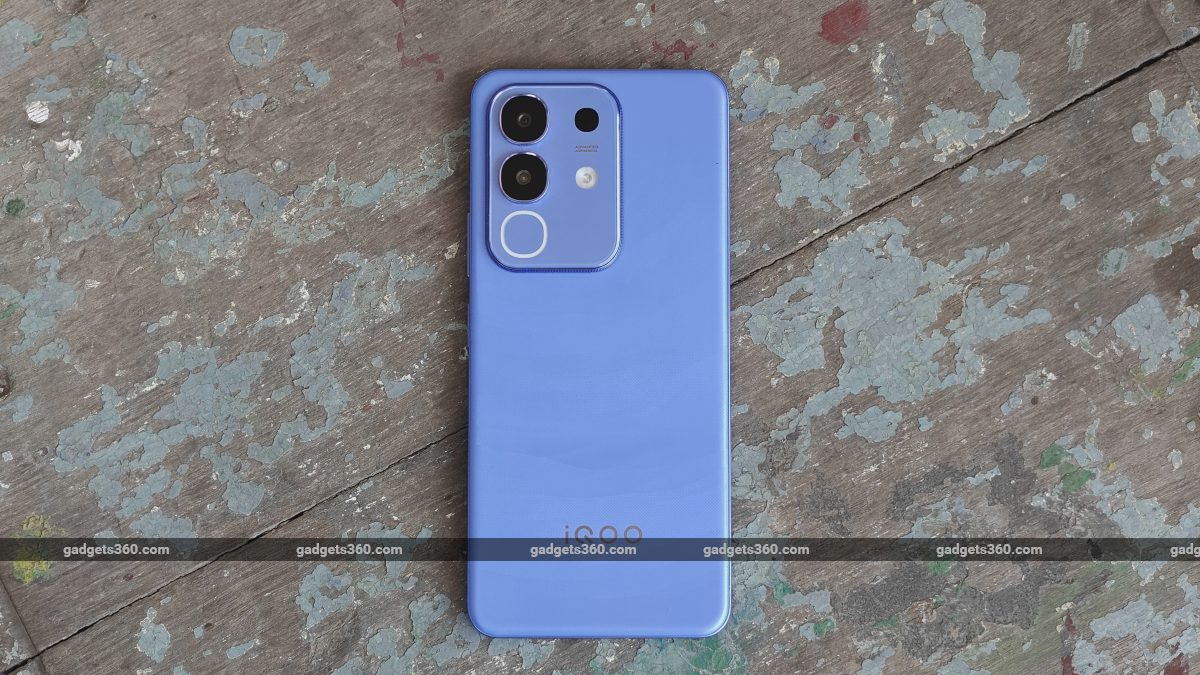
The premiumisation of the budget smartphone, which started a few years ago (and continues today), meant that everyone would have purchased a sub-Rs. 15,000 device were then willing to spend upwards of Rs. 20,000, provided the device justified its price tag. It could accomplish this by offering a decent set of cameras with good performance, faster charging, better displays and more. And so you could buy a quality smartphone like the Realme 9 Pro+ that checked all the boxes at the lower end of the mid-range.
The ‘5G Tax’ (the cost of adding 5G connectivity to a smartphone) also forced the value-for-money budget segment to turn into bare-bones devices, which got you fewer cameras (compared to their 4G counterparts), basic plastic designs and average battery life. These smartphones solely existed to deliver 5G connectivity for those on tight budgets and nothing more. But after years of delivering the same phones with the same strategy, things are finally starting to change.
There are a few devices, such as the Poco M7 Pro and the CMF Phone 1, that offer more than just basic 5G connectivity under Rs. 15,000. After releasing a basic 5G-enabled Z9x last year, iQOO’s Z10x finally appears to be steering things in the right direction. iQOO’s latest Z10x adds even more features to the mix, but does it cut any corners to get there?
iQOO Z10x Design: What’s with that camera?
- Dimensions – 165.7 x 76.3 x 8.09mm
- Weight – 204 grams
- Durability – IP64
While the iQOO Z9x went with a rather basic design, the iQOO Z10x at least makes some honest attempts to break the mould. It still uses polycarbonate plastic for its rear panel and mid-frame, but the overall fit and finish are a lot better this time.
The mid-frame has flat sides with bevelled edges, while the rear panel has curved edges around, making the phone comfortable to hold. This is important because this is a big-battery smartphone that feels a bit heavy at 204 grams. While I’m not a fan of the lavender colour of the Ultramarine finish, I do like that iQOO has made attempts to give it a subtle wave-like pattern, which is visible at certain angles. It makes this basic budget smartphone feel a bit special. I’m also happy to see that this polycarbonate rear panel does not gather smudges or attract dust due to its frosted appearance and texture.
![]()
iQOO’s Z10x has polycarbonate mid-frame and rear panel
As pointed out in my first impressions, the camera module looks like there’s a lot going on, and it’s packed with features. Adding to this image is its chunky appearance. It protrudes quite a bit, making the phone wobble a lot when placed on a flat surface.
Soon after the unboxing, I was a bit shocked to discover that it had just one user-accessible camera at the back. The second one is a 2-megapixel depth sensor for the Portrait mode, while the third camera-like cavity is an infrared blaster.
Placing the infrared blaster in the camera module makes little sense. The IR blaster is usually placed on the top edge of the phone so that it’s pointing in the right direction when using the built-in app. Anyone attempting to use the remote control feature to control an appliance will obviously be sitting upright and holding the phone near waist level.
![]()
The infrared (IR) blaster is oddly placed at the back of the phone
Because this IR blaster is placed at the back, you have to hold the phone up in one hand (ensuring it’s pointed at the right appliance) and then use your other hand to operate the Smart Remote app, making it a two-handed affair. The positioning of the IR blaster is clearly a cosmetic move to make the camera appear sophisticated and appealing (like a triple camera setup).
Another new addition to the camera module is the Dynamic light, which has been borrowed from Vivo’s Y series. The Dynamic light basically functions as a notification LED, alerting users about incoming calls, messages, music, and even the battery’s charging state. You can choose between three preset colours, but you cannot customise and choose a shade from a colour picker. Overall, I did find the Dynamic light feature useful. When charging the phone you can only tell when the phone is charging (blinking green), fully charged (steady colour of your choice) and low battery (red), which is useful provided you always keep your phone face down. Oddly, the settings for this feature are weirdly buried in the Settings > Shortcuts and Accessibility > Dynamic light section of the Settings app.
![]()
The wave-like pattern on the Ultramarine finish is visible only at certain angles
The iQOO Z10x, just like the iQOO Z9x, gets an IP64 rating for dust and water resistance. This rating provides full protection against dust and sand but is only splash-proof when it comes to water. However, iQOO’s warranty does not cover damage caused by liquid ingress, so it’s wise to be a bit cautious. The iQOO Z10x is MIL-STD-810H certified, meaning that this device can function normally in extreme climates and temperatures.
iQOO Z10x Display: Gets the job done
- Display size – 6.72-inch, 2,408 x 1,080 pixels, full-HD+
- Display type – LCD, 60-90-120Hz
- Display protection – Panda glass
Just like its predecessor, the protective display glass on the iQOO Z10x gets smudged easily. The display’s colours appear saturated when using the default Standard colour mode, but appear more natural with the ‘Professional’ preset. It gets sufficiently bright when used outdoors, both when browsing through apps or viewing video content. However, being an LCD, it does not offer the deepest blacks like some AMOLED displays (available on competing smartphones) can. You can still enjoy your streaming shows at full-HD resolution in standard definition, as the phone supports Widevine L1 playback specification.
![]()
The iQOO Z10x’s display has noticeably thick borders, especially at the bottom
Finding an Always-on-display (AOD) feature in the personalisation setting was a bit of a surprise. This is because the feature will consume a lot of power on an LCD panel, which, unlike an AMOLED panel, cannot shut off its unused pixels but has to keep its entire backlight on. Thankfully, iQOO’s software only allows the AOD feature to come alive when a new notification arrives or upon waking up the device.
iQOO Z10x Software: Standard stuff
- Android version – 15
- Software – Funtouch OS 15
- Software commitment – 2 years software, 3 years security
Funtouch OS has been around for a while and needs no special introduction. With Funtouch OS 15, Vivo added a bunch of new AI tools among the many new customisation features which were missing in past versions. The new AI tools are practical but not exactly capable when it comes to image editing.
The phone does come with some bloatware and third-party apps, but the latter can be uninstalled if not required. Strangely, there, I received very few spammy notifications during the review period. These were mainly from the Browser app, which will push notifications even if you have never opened the app. Avoiding opening the V-Appstore (or ignoring it altogether) is also a good way to avoid getting unnecessary notifications from it.
![]()
iQOO’s Funtouch OS 15 brings some AI tools to Android 15
iQOO and Vivo’s decent track record with delivering updates mainly applies to its premium and mid-range devices. Budget devices do take additional time to receive their updates and, so users might be left wanting for more, as promised updates arrive a bit later than expected. With this in mind, iQOO offering just two years of OS updates is worrisome for those who hold on to their devices for many years. The good thing is that the phone already ships with Android 15, so with two years of updates, there is a good chance it will get upgraded to Android 16 and maybe Android 17.
iQOO Z10x Performance: As good as it gets
- Processor – MediaTek Dimensity 7300, 2.5GHz, 4nm
- RAM – 6/8GB (LPDDR4X)
- Storage – 128/256GB (UFS 3.1)
Funtouch OS 15 runs smoothly on mid-range and premium devices, it’s not the case with a budget smartphone like the Z10x. With the screen’s refresh rate set to Auto, I noticed quite a few hiccups from time to time, where the phone stuttered while scrolling through feeds or lagged a bit when launching apps. There appears to be a lack of software optimisation, as, at times, it felt like the hardware was struggling to keep up with the software’s gestures. It’s 2025, and while all of this is acceptable on entry-level devices with barebones hardware, iQOO needs to polish the Z10x’s software, as I am reviewing the 8GB RAM variant.
![]()
The iQOO Z10x’s display is a smudgy mess
The stereo speakers provide a very treble-heavy sound, but it’s just not loud enough. The phone has an Audio Booster mode which bumps up the volume to 400 percent, but it only sounds worse (read tinny) once you cross 100 percent. One is indeed better off connecting a pair of wired earphones. But iQOO chose to remove the 3.5mm headphone jack this year. So, TWS it is!
The phone has no noticeable heating issues even when using the camera app. iQOO seems to have made good use of the graphite sheets as this phone does not pack any vapour chamber cooling system (given its price point).
As for raw performance, the iQOO Z10x performed well compared to its competitors in this segment, as is visible in the table below.
| Benchmarks | iQOO Z10x | Poco M7 Pro | CMF Phone 1 |
|---|---|---|---|
| Chipset | Dimensity 7300 (4nm) | Dimensity 7025 Ultra (6nm) | Dimensity 7300 (4nm) |
| Display resolution | FHD+ | FHD+ | FHD+ |
| AnTuTu v10 | 7,09,256 | 4,77,196 | 6,39,355 |
| PCMark Work 3.0 | 10,854 | 10,661 | 12,398 |
| Geekbench 6 Single | 1,033 | 942 | 1,037 |
| Geekbench 6 Multi | 2,923 | 2,235 | 2,932 |
| GFXB T-rex | 94 | 57 | 60 |
| GFXB Manhattan 3.1 | 50 | 29 | 50 |
| GFXB Car Chase | 29 | 16 | 29 |
| 3DM Slingshot Extreme OpenGL | 5,062 | 2,435 | 5,177 |
| 3DM Slingshot | 6,486 | 3,261 | 6,690 |
| 3DM Wild Life | 3,144 | FTR | 3,122 |
| 3DM Wild Life Unlimited | 3,138 | FTR | 3,131 |
Gaming performance is good, keeping in mind other devices available in this segment. Of course, the phone struggles to maintain a steady frame rate, but it’s possible to play Call of Duty: Mobile at Very High graphics settings. Touch sampling is just about sufficient. You can enjoy smoother gameplay at Low graphics and Ultra frame rate, but the frame rate hovers around 60 fps and nothing beyond.
iQOO Z10x Cameras: Same old, same old
- Primary camera – 50-megapixel, f/1.8, AF
- Depth camera – 2-megapixel
- Selfie camera – 8-megapixel, f/2.05, FF
Since there is only one accessible camera at the back, it has to take on the jobs of multiple lenses and, therefore, must be adaptable to various situations. Indeed, not much has changed in terms of imaging compared to the iQOO Z9x, and this is because the iQOO Z10x also makes use of the same hardware as its predecessor.
iQOO Z10x primary camera samples (tap images to expand)
In daylight, the primary camera, at its default magnification, captures average photos for a smartphone at this price point. The photos will look fine on your phone, but zoom in even a little bit, and the images start to tear up. Dynamic range is decent, but there’s plenty of noise visible, especially in the shadows, even in daylight. You will also come across random patches with garbled details (bad noise processing), as is visible from the sample showing a main road above. Anything that moves gets blurred, and so the foliage and finer details are often lost.
Under dim or low light with street lighting, images appear soft and have a water-colour effect with blurred details
Using the 2X zoom (below) is not recommended, as the phone struggles to capture decent images at its default shooting resolution. The 10cm focussing range did allow me to get close enough for close-up shots (above).
The selfie camera offers good edge detection, but the image quality is strictly average.
Selfies have average detail and appear slightly soft, depending on the available light. The camera also has trouble exposing the subject in very bright environments, as can be seen in the first selfie sample. In low light, it’s not worth pulling out this phone for a selfie, even with the screen flash turned on.
Given that this is a budget smartphone, my expectations with video recording were not very high. The rear camera kind of proved this point by capturing very basic video quality (you can tell what’s happening in a scene) with bad dynamic range (clipped shadows). The phone also struggles to keep the frame in focus while panning, and the EIS results in a very cropped view. In low light, the details just aren’t there. It’s hard to identify people even when shooting a brightly lit street from a close distance. The video recording also appears jerky when walking because the camera lacks OIS.
iQOO Z10x Battery: Impressive!
- Battery capacity – 6,500mAh
- Wired charging – 44W
- Charger in the box – Yes
In our PC Mark Work Battery test, which runs a bunch of applications on a loop till the phone’s battery drains to 20 percent, the iQOO Z10x managed a respectable 24 hours and 10 minutes. In our video loop test, which plays an HD video on loop till the battery runs out, it managed a solid 37 hours and 46 minutes. Last year’s iQOO Z9x lasted 22 hours and 35 minutes in the same test, which goes to show that the higher capacity battery does bring about improvements in battery life.
![]()
iQOO’s Z10x packs a high-capacity 6,500mAh battery
During the testing period, despite heavy usage with the phone being used continuously (social media apps, mail, messaging etc., video streaming, 3D gaming), I only managed to drain the phone’s battery to 40 percent. So, it’s safe to assume that regardless of your usage, it should last you more than a day of heavy use and about two days with casual usage.
Charging is one area that has not got any upgrades. The charger isn’t exactly slow, but when paired with a battery with such a high capacity, charging takes a while. It’s still tolerable, with the phone managing a 38 percent charge in 30 minutes, 74 percent in an hour and completing the charging process in 1 hour and 36 minutes.
iQOO Z10x Verdict
After spending time with the iQOO Z10x, it’s clear that the brand has not cut any corners for its new Z series smartphone. iQOO has attempted to fix the flaws of the previous model but came up short of the competition in some areas. There is a silver lining to iQOO’s efforts to stand out (bigger battery delivers better standby), but it could have focused its efforts on better-optimised software and a better set of cameras, even if it just delivers the basics.
Poco’s M7 Pro (Review) may not offer the best performance in its segment, but it gets you an AMOLED panel with deep blacks that many will appreciate and an OIS-stabilised camera that will get you sharper photos. It’s still the phone to beat in this segment, with prices starting from as low as Rs. 13,700 for the base 6GB RAM variant. CMF’s Phone 1 (Review), apart from its Super AMOLED display and slightly better cameras (compared to the Z10x), also offers something exciting with its modular approach for the DIY crowd at this price point.
Tech News
कार्ल पेई ऑन नथिंग एंड सीएमएफ भारत के युवाओं पर बड़ी दांव लगा रहे हैं, एआई हाइप से परे, और बोल्ड स्मार्टफोन मार्केट रणनीति
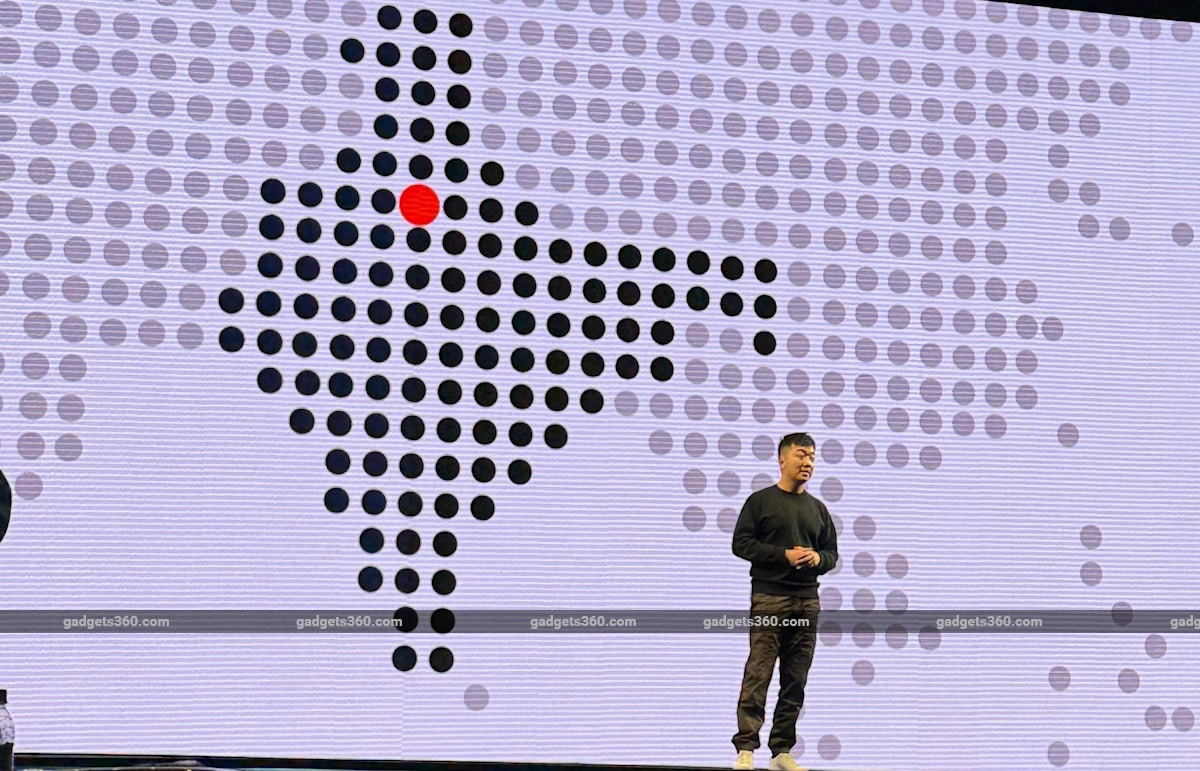
कुछ भी नहीं, लंदन स्थित कंपनी, अपने पारिस्थितिकी तंत्र का लगातार विस्तार कर रही है, और सीएमएफ फोन 2 प्रो, बड्स 2, बड्स 2 प्लस, और बड्स 2 ए नवीनतम प्रवेशक हैं। लगभग एक वर्ष में, उप-ब्रांड उन उपकरणों को लाने के लिए बाहर जा रहा है जो यह सोचते हैं कि भारत में उपभोक्ताओं के लिए एक फर्क पड़ेगा। सबसे अच्छी बात यह है कि ब्रांड भारतीय उपभोक्ताओं की तर्ज पर सोच रहा है, और बाजार की प्रतिक्रिया लेने के बाद, इसने ए जोड़ा है चार्जिंग एडाप्टर और केस तक सीएमएफ फोन 2 प्रो खुदरा इकाई।
घटना के मौके पर, गैजेट्स 360 को नए फोन, भारतीय स्मार्टफोन बाजार, नवाचार चुनौतियों और भविष्य की योजनाओं के बारे में बात करने के लिए कुछ भी सीईओ कार्ल पेई के साथ बैठने का मौका मिला।
कुछ भी नहीं/ CMF: युवा उपयोगकर्ता आधार एक वरदान है
नए उप-ब्रांड CMF के बारे में बात करते हुए, PEI ने जोर देकर कहा कि उपयोगकर्ताओं की औसत आयु 25 से कम है, जो एक युवा ब्रांड के लिए एक बड़ा प्लस है। “हम अपने उपयोगकर्ता आधार के आधार पर दुनिया के सबसे कम उम्र के स्मार्टफोन ब्रांड हैं। मुझे लगता है कि यहां भारत में, हमारे उपयोगकर्ताओं के लिए औसत आयु 24 है। मुझे लगता है कि यह वास्तव में महत्वपूर्ण है क्योंकि अगर कोई कंपनी हमेशा युवा ग्राहकों को प्राप्त करने में सक्षम होती है, तो इसका मतलब है कि बाजार में हिस्सेदारी समय के साथ बढ़ती जाएगी। यदि उपयोगकर्ता आधार समय के साथ कम हो जाएगा, तो वह बहुत अधिक होगा।
भारत के अलावा, PEI ने कहा कि यूरोप स्मार्टफोन श्रेणी में कुछ भी नहीं के लिए दूसरा सबसे बड़ा बाजार है, जबकि ऑडियो श्रेणी बहुत अलग है। “ऑडियो के लिए, यह मुख्य रूप से अमेरिका, ब्रिटेन, जर्मनी और जापान जैसे देशों को विकसित किया गया है क्योंकि हमें iPhone समस्या नहीं है।”
लॉन्च के समय, काउंटरपॉइंट रिसर्च में अनुसंधान निदेशक और टेलीकॉम विश्लेषक तरुण पाठक ने एक दिलचस्प डेटा बिंदु का खुलासा किया: कुछ भी नहीं 156 प्रतिशत से अधिक YOY विकास की एक बड़ी छलांग देखी गई, जिससे यह भारत में सबसे तेज स्मार्टफोन ब्रांड बन गया और पांच क्रमिक तिमाहियों के लिए एक बड़े पैमाने पर कूद देख रहा है। दिलचस्प बात यह है कि काउंटरपॉइंट डेटा के अनुसार, इस मील के पत्थर को प्राप्त करने के लिए पिछले एक दशक में कुछ भी नहीं है।
उपभोक्ता बदलाव के बारे में बात करते हुए, PEI ने एक आकर्षक अंतर्दृष्टि साझा की: लगभग 12 प्रतिशत iPhone उपयोगकर्ता कुछ भी नहीं फोन पर स्थानांतरित हो गए हैं।
“12 प्रतिशत कम लग सकता है, लेकिन वास्तव में, यह बहुत अधिक है क्योंकि यहां से Apple मार्केट में हिस्सेदारी हमारे पास है। इसका मतलब है कि हम Apple के प्रति उपयोगकर्ताओं को खो रहे हैं। मुझे लगता है कि हम वास्तव में देख रहे हैं कि हम वास्तव में खुश हैं क्योंकि मुझे लगता है कि हमारे पास दो ब्रांडों के बीच एक समान लोकाचार है, न कि केवल तकनीकी फोकस, बल्कि समग्र अनुभव, सॉफ्टवेयर, डिजाइन, और यह है कि बहुत अधिक ध्यान दें।
![]()
सीएमएफ फोन 2 प्रो के लॉन्च के दौरान, अकीस इवेंजेलिडिस, सह-संस्थापक और भारत अध्यक्ष, कुछ भी नहीं
टेलीफोटो लेंस जोड़: एक स्मार्ट चाल!
जब सभी नए सीएमएफ फोन 2 प्रो में टेलीफोटो कैमरा जोड़ने के बारे में पूछा गया, तो पीईआई ने कहा कि यह एक व्यक्तिगत चीज से अधिक था। ऑल-न्यू सीएमएफ फोन में 50-मेगापिक्सेल टेलीफोटो कैमरा है, जो इसे उप-आरएस में एकमात्र बनाता है। इस तरह की सुविधा की पेशकश करने के लिए 20,000 खंड।
पेई ने कहा, “यह एक व्यक्तिगत चीज से अधिक है क्योंकि मैंने अधिक से अधिक लोगों को 2x सही में शूट करना पसंद किया है। क्योंकि जब आप 2x में शूट करते हैं, तो किनारों को बहुत बेहतर लगता है। यदि आप 1x कुछ पर शूट करते हैं, तो कभी -कभी किनारों को तंग किया जाता है। वास्तव में हमें उम्मीद से बेहतर काम किया गया है।
एआई के बारे में बात करते हुए, बज़वर्ड, पीईआई ने कहा कि वह कंपनी में एआई टर्म के उपयोग पर प्रतिबंध लगाना चाहता है और कहा कि “एआई सिर्फ एक उपकरण है, बस एक उपयोगकर्ता की आवश्यकता को हल करने और हल करने के लिए सामग्री है।” उन्होंने कहा कि हाल ही में एआई को स्मार्टफोन ब्रांडों द्वारा किसी भी चीज़ की तुलना में अधिक विपणन शब्द के रूप में धकेल दिया गया है।
कुछ भी नहीं/ सीएमएफ: स्मार्टफोन बाजार के लिए बोल्ड रणनीति
PEI ने यह भी कहा कि CMF उत्पाद लाइन सहित कुछ भी उत्पादों को “मेक इन इंडिया” पहल के बाद भारत में निर्मित किया जा रहा है। उन्होंने यह भी कहा कि कंपनी ने भारत से उत्पादों का निर्यात करना शुरू कर दिया है, और मध्य पूर्व उन क्षेत्रों में से एक है जो “मेड इन इंडिया” उत्पादों को प्राप्त कर रहे हैं।
स्मार्टफोन मार्केट एंड इनोवेशन चैलेंज के दृष्टिकोण पर PEI ने कहा कि अब तक कुछ भी व्यावहारिक दृष्टिकोण नहीं लिया है। “हम इस व्यवसाय को चलाने के तरीके के बारे में सुपर प्रैक्टिकल हैं। क्योंकि जैसा कि आप कल्पना कर सकते हैं, इंजीनियरिंग को प्रत्येक नए उत्पाद को विकसित करने के लिए बहुत पैसा खर्च होता है। फिर हमारे द्वारा लॉन्च किए गए प्रत्येक उत्पाद को एक हिट होना पड़ता है, सही है? क्योंकि हम उन सभी लागतों को ऑफसेट करने के लिए जो हम निवेश करते हैं, इसलिए, हम इस नवाचार में काफी रूढ़िवादी हैं कि हम समय के साथ बाजार में बढ़ते हैं। PEI ने कहा कि सॉफ्टवेयर पर शुरू होने के लिए यह हो रहा है।
![]()
सीएमएफ फोन 2 प्रो के लिए वैश्विक कीमतों की घोषणा करने वाली अकीस
आवश्यक स्थान: मुफ्त रन जल्द ही समाप्त होता है?
अंत में, हमने एसेंशियल स्पेस के बारे में जाँच की, नथिंग 3 ए सीरीज़ में पेश की गई ऑल-न्यू-पावर्ड फीचर। यह फीचर उपयोगकर्ताओं को नोट्स, वॉयस नोट्स, और सेट रिमाइंडर लेने देता है, एक स्थान पर पैक किया जाता है और डिवाइस पर एक समर्पित बटन द्वारा प्रबंधित किया जाता है।
हाल ही में, कुछ उपयोगकर्ताओं ने दावा किया कि उन्होंने मासिक प्रसंस्करण सीमा तक पहुंचने के बारे में संदेशों पर ध्यान दिया और अनुमान लगाया कि आवश्यक स्थान अंततः भविष्य में एक भुगतान की गई सुविधा बन जाएगा। PEI ने रिपोर्ट किए गए मुद्दे को स्वीकार किया और कहा कि आवश्यक स्थान में अलग -अलग स्तर होंगे।
“वर्तमान कार्यक्षमता मुक्त रहेगी। लेकिन हमारा दृष्टिकोण ऐसा है, पहले हमें मूल्य देने के लिए मिला, फिर हमें दूसरे तरीके से नहीं, इसके लिए चार्ज करना होगा, न कि किसी ऐसी चीज के लिए चार्ज करने के लिए जो बहुत उपयोगी नहीं है। इसलिए मुझे पता है कि हमारे कुछ उपयोगकर्ताओं ने इसकी सूचना दी है, लेकिन हम इसे संप्रेषित करने में सर्वश्रेष्ठ नहीं हैं।”
कुछ भी नहीं के नवीनतम उत्पादों द्वारा सीएमएफ एक चरणबद्ध तरीके से बिक्री पर जाएगा, सीएमएफ फोन 2 प्रो के साथ शुरू होता है, जो अगले सप्ताह बिक्री पर जाता है, जबकि सीएमएफ बड्स 2, बड्स 2 प्लस, और बड्स 2 ए भारत में उपलब्ध होंगे Q2 2025 के अंत तक।
Tech News
Huawei वॉच 5, देखें 4 श्रृंखला डिजाइन, मूल्य निर्धारण और विनिर्देशों को खुदरा वेबसाइट के माध्यम से लीक किया गया
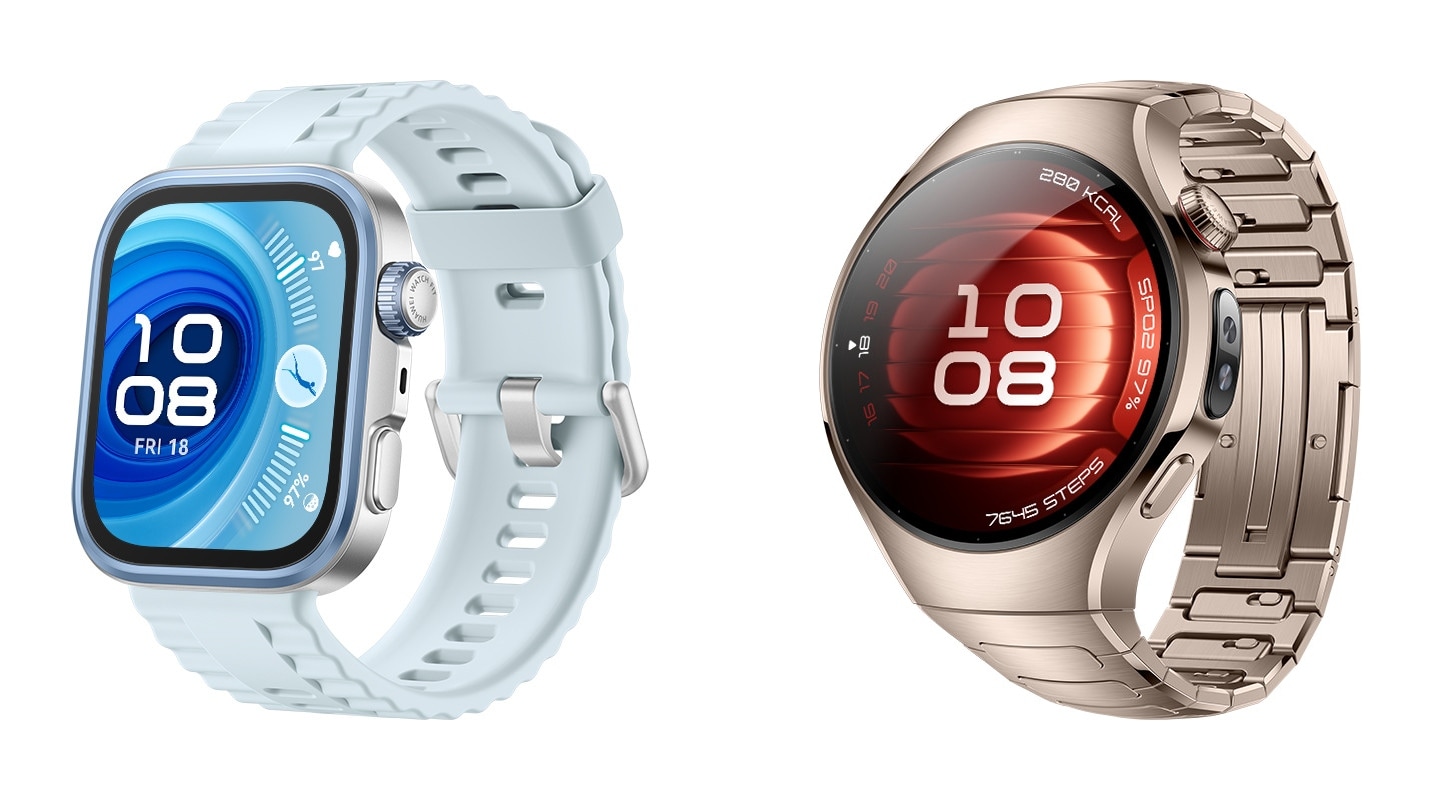
Huawei 15 मई को बर्लिन में एक “अभिनव उत्पाद लॉन्च” कार्यक्रम की मेजबानी करने के लिए तैयार है। लॉन्च इवेंट के दौरान चाइनीज टेक ब्रांड को अपनी नई स्मार्टवॉच रेंज, संभवतः 5 वॉच 5 और वॉच फिट 4 का अनावरण करने के लिए छेड़ा गया है। औपचारिक खुलासा से कुछ हफ्ते पहले, Huawei Watch 5 और Watch Fit 4 सीरीज़ कथित तौर पर एक रिटेलर वेबसाइट पर दिखाई दी हैं, जिसमें उनके डिजाइन, मूल्य विवरण और विनिर्देशों का खुलासा किया गया है। Huawei वॉच 5 दो आकारों में उपलब्ध होने की उम्मीद है।
हुआवेई वॉच 5, देखें फिट 4 सीरीज़ डिज़ाइन (अपेक्षित)
अघोषित Huawei वॉच 5 था धब्बेदार लिथुआनियाई पर सुमिमोबीली द्वारा RETAILER बडा बॉक्स। प्रकाशन ने कई छवियों को छीन लिया (लिस्टिंग को नीचे ले जाने से पहले) जो डिवाइस को अन्य Huawei स्मार्टवॉच के समान दिखाते हैं। वॉच 5 मॉडल को डिजिटल मुकुट के साथ एक गोलाकार प्रदर्शन करते देखा जा सकता है। यह कहा जाता है कि यह 42 मिमी और 46 मिमी आकारों में उपलब्ध है, जिसमें स्टील और सिलिकॉन स्ट्रैप विकल्प हैं।
छोटे पहनने योग्य को कथित तौर पर अरोरा ग्रीन, मून व्हाइट, स्टेलर बेज, और डॉनलाइट कोलोरवेज में सूचीबद्ध किया गया है, जबकि 46 मिमी आकार के संस्करण को आधी रात को ब्लैक, बृहस्पति ब्राउन, ट्वाइलाइट पर्पल और स्पेस सिल्वर शेड्स में पेश किया जाता है।
कथित रेंडर से पता चलता है कि हुआवेई वॉच 5 में कुछ स्वास्थ्य ट्रैकिंग सुविधाएँ शामिल होंगी, जिनमें एक SPO2 (रक्त ऑक्सीजन संतृप्ति) और हृदय गति की निगरानी शामिल है। इसमें एक कदम काउंटर और एक कैलोरी ट्रैकर है। यह कहा जाता है कि 466 × 466 पिक्सेल के रिज़ॉल्यूशन के साथ एक AMOLED डिस्प्ले है। स्मार्टवॉच एक IP68 रेटिंग और नीलम ग्लास द्वारा संरक्षित एक टिकाऊ प्रदर्शन का दावा कर सकता है।
रिपोर्ट में कथित रेंडर और Huawei Watch Fit 4 और Fit 4 Pro के विनिर्देशों में भी शामिल हैं। कहा जाता है कि उनके पास 1.82 इंच का AMOLED डिस्प्ले है। प्रो को ट्रूसेंस हेल्थ मॉनिटरिंग सिस्टम की सुविधा के लिए कहा जाता है, जबकि नियमित पुराने सेंसर को पैक करेगा।
Huawei वॉच फिट 4 प्रो को चौकोर आकार के डायल और विनिमेय बैंड के साथ दिखाया गया है। यह काले, नीले और हरे रंगों में दिखाया गया है, जबकि नियमित Huawei वॉच फिट 4 को काले, ग्रे, बैंगनी और सफेद रंगों में सूचीबद्ध किया गया है।
Huawei वॉच 5, देखें फिट 4 मूल्य (अपेक्षित)
Huawei वॉच 5 की कीमत कथित तौर पर EUR 449 (लगभग 43,000 रुपये) से शुरू होती है और EUR 649 (लगभग 62,000 रुपये) तक जाती है। Huawei वॉच फिट 4 की कीमत EUR 219 (लगभग 21,000 रुपये) है। Huawei Watch Fit 4 Pro की कीमत EUR 299 (लगभग 28,000 रुपये) है।
Tech News
CMF फोन 2 प्रो Mediatek Dimentions 7300 Pro SoC के साथ, ट्रिपल रियर कैमरे भारत में लॉन्च किए गए: मूल्य, विनिर्देश
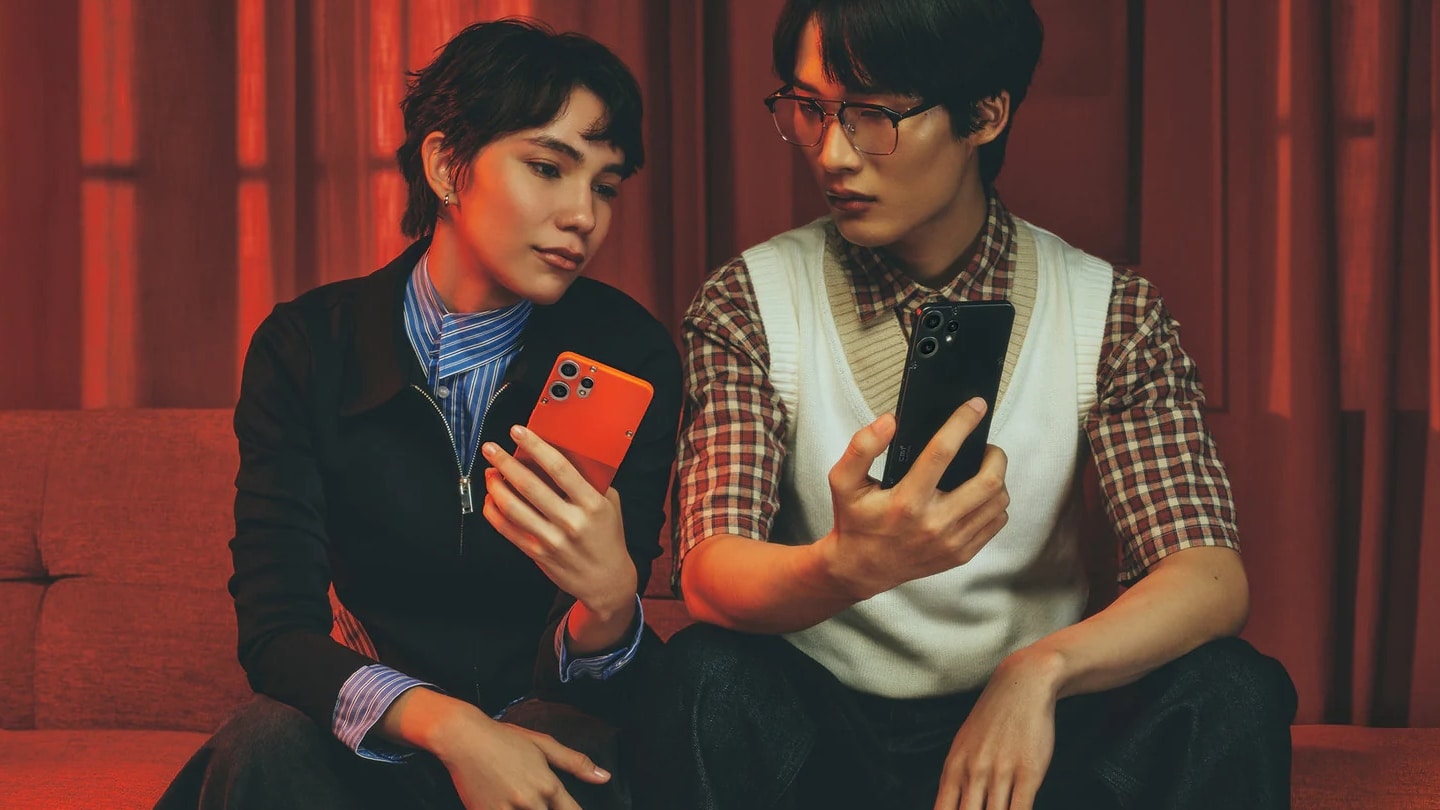
सीएमएफ फोन 2 प्रो सोमवार को भारत में पिछले साल के अनुवर्ती के रूप में लॉन्च किया गया है सीएमएफ फोन 1। इसके सीएमएफ उप-ब्रांड के तहत कुछ भी नहीं द्वारा जारी किया गया नवीनतम हैंडसेट हुड के नीचे एक मीडियाटेक डिमिडेंस 7300 प्रो चिपसेट के साथ चार रंग विकल्पों में आता है। CMF फोन 2 प्रो में 120Hz अनुकूली रिफ्रेश रेट के साथ 6.77 इंच का AMOLED डिस्प्ले है और 50-मेगापिक्सल मुख्य सेंसर द्वारा हेडलाइन एक ट्रिपल रियर कैमरा यूनिट को फ्लॉन्ट करता है। इसमें IP54-रेटेड बिल्ड है और वायर्ड और रिवर्स चार्जिंग दोनों के लिए समर्थन के साथ 5,000mAh की बैटरी है।
भारत में CMF फोन 2 प्रो मूल्य, उपलब्धता
भारत में CMF फोन 2 प्रो मूल्य रु। बेस 8GB + 128GB रैम और स्टोरेज मॉडल के लिए 18,999। फोन 8GB + 256GB वेरिएंट में भी उपलब्ध है, जिसकी कीमत रु। 20,999। यह काले, हल्के हरे, नारंगी और सफेद रंग के विकल्पों में पेश किया जाता है और फ्लिपकार्ट, सीएमएफ इंडिया वेबसाइट और रिटेल पार्टनर्स के माध्यम से बिक्री पर जाएगा।
सीएमएफ फोन 1 की तरह, नया फोन 2 प्रो जहाजों के साथ विभिन्न सामान जैसे यूनिवर्सल कवर, विनिमेय लेंस, बटुए, स्टैंड, डोरी या कार्ड धारक (अलग से बेचा)।
सीएमएफ फोन 2 प्रो विनिर्देश
डुअल-सिम (नैनो+नैनो) सीएमएफ फोन 2 प्रो एंड्रॉइड 15-आधारित कुछ भी नहीं ओएस 3.2 चलाता है, और यह तीन साल के प्रमुख एंड्रॉइड अपडेट और छह साल के सुरक्षा पैच प्राप्त करने की पुष्टि की जाती है। यह 6.77-इंच पूर्ण-एचडी+ (1,080 × 2,392 पिक्सल) AMOLED डिस्प्ले के साथ 120Hz अनुकूली रिफ्रेश रेट, 2160Hz PWM आवृत्ति, 387ppi पिक्सेल घनत्व, 480Hz टच सैंपलिंग दर और 3,000nits पीक ब्राइटनेस के साथ स्पोर्ट करता है। डिस्प्ले में HDR10+ सपोर्ट और पांडा ग्लास प्रोटेक्शन है।
![]()
सीएमएफ फोन 2 प्रो
फोटो क्रेडिट: कुछ भी नहीं
CMF फोन 2 प्रो में हूड के नीचे एक ऑक्टा-कोर मीडियाटेक डिमिस्टेंस 7300 प्रो चिपसेट है, जो 8GB रैम के साथ मिलकर है। इस नई चिप को 10 प्रतिशत तेजी से सीपीयू और पिछले साल के सीएमएफ फोन 1 पर पांच प्रतिशत ग्राफिक्स सुधार देने के लिए विज्ञापित किया गया है, जो कि मीडियाटेक डिमिस्टेंस 7300 प्रोसेसर पर चलता है। ऑनबोर्ड रैम को राम बूस्टर सुविधा के साथ 16GB तक विस्तारित किया जा सकता है।
ऑप्टिक्स के लिए, सीएमएफ फोन 2 प्रो में एक ट्रिपल रियर कैमरा यूनिट है जिसमें एफ/1.88 एपर्चर और ईआईएस के साथ 50-मेगापिक्सेल 1/1.57-इंच सेंसर, एफ/1.88 एपर्चर के साथ 50-मेगापिक्सेल टेलीफोटो कैमरा और एफ/2.2 अपशिष्टता के साथ 8-मेगापिक्सल अल्ट्रा-वाइड कैमरा और एक 119.5-डीईएफआरईई क्षेत्र है। टेलीफोटो कैमरे में 2x ऑप्टिकल ज़ूम और 20X डिजिटल ज़ूम है। मोर्चे पर, इसमें एफ/2.45 एपर्चर के साथ 16-मेगापिक्सल का सेल्फी कैमरा है। नया फोन उपयोग करेगा कुछ भी नहीं है बेहतर कैमरा आउटपुट के लिए Truelens इंजन 3.0 प्रौद्योगिकी।
CMF फोन 2 प्रो 256GB तक ऑनबोर्ड स्टोरेज प्रदान करता है जो 2TB तक के विस्तार का समर्थन करता है। स्मार्टफोन पर कनेक्टिविटी विकल्पों में 5 जी, वाई-फाई 6, ब्लूटूथ 5.3 और एक यूएसबी टाइप-सी पोर्ट शामिल हैं। इसका प्रमाणीकरण के लिए एक ऑप्टिकल इन-डिस्प्ले फिंगरप्रिंट सेंसर है।
हैंडसेट में धूल और छप प्रतिरोध के लिए एक IP54 रेटिंग है। इसके अलावा, इसमें दो माइक्रोफोन शामिल हैं। नए फोन में एक आवश्यक कुंजी है जो उपयोगकर्ताओं को स्क्रीनशॉट, फ़ोटो और वॉयस नोट जैसे डेटा तक पहुंचने के लिए नए आवश्यक स्थान तक पहुंचने की सुविधा देता है।
CMF फोन 2 प्रो में 5,000mAh की बैटरी होती है जो 33W फास्ट चार्जिंग और 5W रिवर्स वायर्ड चार्जिंग का समर्थन करती है। बैटरी यूनिट को एक चार्ज पर अधिकतम 47 घंटे के कॉलिंग समय और 22 घंटे तक YouTube स्ट्रीमिंग समय देने के लिए विज्ञापित किया जाता है। फ़ोन का भारतीय संस्करण एक चार्जिंग एडाप्टर और बॉक्स में एक केस के साथ जहाजों को जहाज करता है। यह 164 × 7.8 × 78 मिमी को मापता है और इसका वजन 185 ग्राम है।
Tech News
CMF फोन 2 प्रो फर्स्ट इंप्रेशन
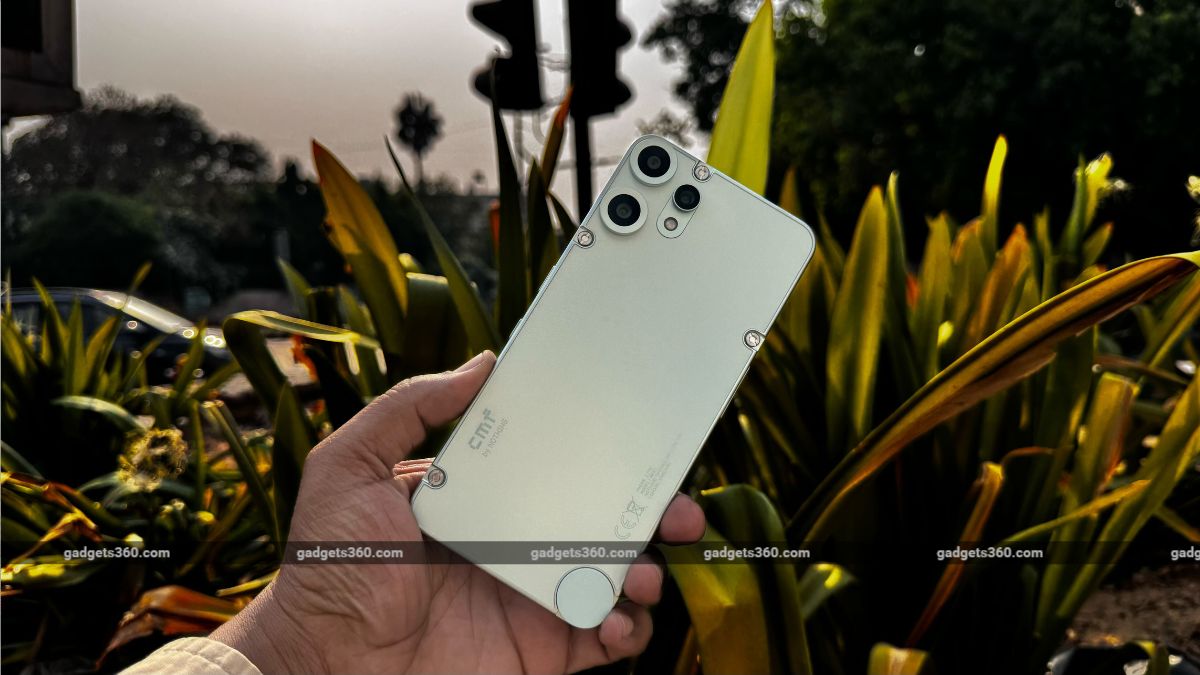
CMF द्वारा कुछ भी नहीं ने अपने CMF फोन 1 के साथ पिछले साल भारत में अपनी शुरुआत की। फोन उपयोगकर्ताओं के बीच एक हिट बन गया क्योंकि इसने ग्राहकों को कुछ अनूठे प्रस्ताव प्रदान किए और काफी लोकप्रिय हो गए, सभी इसकी मॉड्यूलर डिजाइन भाषा के लिए धन्यवाद, जिसमें कोई भी आसानी से बैक पैनल को बदल सकता है, सामान जोड़ सकता है, और बहुत कुछ। अब, इसी सफलता पर बैंकिंग, ब्रांड ने सीएमएफ फोन 2 प्रो के लॉन्च के साथ भारत में अपनी अगली पीढ़ी के सीएमएफ स्मार्टफोन की शुरुआत की है।
नवीनतम हैंडसेट एक मूल्य टैग के साथ आता है रु। 8GB रैम और 128GB के लिए 18,999। 8GB रैम और 256GB विकल्प के साथ टॉप-एंड वेरिएंट रुपये के मूल्य टैग के लिए उपलब्ध है। 20,999। कंपनी का नवीनतम मॉडल बैक पैनल को बदलने, नए सामान संलग्न करने के लिए एक ही DIY स्तर लाता है, और बहुत कुछ। इसके अलावा, हैंडसेट नवीनतम सुविधाओं और विनिर्देशों को तालिका में भी लाता है, जिनमें से कुछ को सेगमेंट-लीडिंग माना जा सकता है। मुझे डिवाइस के साथ कुछ समय बिताने का मौका मिला, और यहां आपको इन पहले इंप्रेशन में जानना होगा।
![]()
CMF फोन 2 प्रो चार रंग विकल्पों में उपलब्ध है: सफेद, काला, हल्का हरा और नारंगी।
आइए पहले डिजाइन के साथ शुरू करें। CMF फोन 2 प्रो अपने पूर्ववर्ती की तुलना में कुछ बेहतर डिज़ाइन सुविधाओं के साथ आता है। समग्र रूप से फिनिश में काफी सुधार हुआ है। फोन चार रंग विकल्पों में उपलब्ध है: सफेद, काला, नारंगी और हल्का हरा। दिलचस्प बात यह है कि काले और हल्के हरे रंग के कांच की बनावट के साथ आते हैं, जो फ्रॉस्टेड ग्लास की नकल करता है। सफेद रंग का विकल्प पीछे की तरफ एक बलुआ पत्थर खत्म करता है, जबकि नारंगी एक धातु खत्म के साथ आता है। मुझे समीक्षा के लिए हल्के हरे रंग का विकल्प मिला, और यह निश्चित रूप से सीएमएफ फोन 1 की तुलना में बहुत अधिक प्रीमियम दिखता है (समीक्षा)।
जब आप इसे छूते हैं तो बैक पैनल पर ग्लास जैसा फिनिश चिकनी महसूस होती है। बेशक, आपके पास चार शिकंजा हैं ताकि आप आसानी से केस को हटा सकें और उपरोक्त विकल्प को जोड़ सकें, जिसे सामान के एक हिस्से के रूप में बेचा जाता है। फोन 2 प्रो मोटाई में 7.8 मिमी है और इसका वजन 185 ग्राम है, जो पिछली पीढ़ी के सीएमएफ फोन 1 (मोटाई में 8 मिमी और वजन में 197 ग्राम) की तुलना में चिकना और हल्का है। हैंडसेट एक IP54 रेटिंग के साथ भी आता है, जो इसे पानी और धूल प्रतिरोधी बनाता है।
![]()
हैंडसेट 6.77-इंच के लचीले AMOLED डिस्प्ले से लैस है जो बाहरी परिस्थितियों में अच्छी चमक प्रदान करता है।
आगे बढ़ते हुए, CMF फोन 2 प्रो को 6.77 इंच के लचीले AMOLED डिस्प्ले के साथ लोड किया गया है। स्क्रीन 2392 x 1080 पिक्सल के रिज़ॉल्यूशन के साथ आती है। कंपनी ने 3,000nits की चोटी की चमक, 120Hz स्क्रीन रिफ्रेश रेट, HDR10+ सपोर्ट, 480Hz टच सैंपलिंग रेट और पांडा ग्लास प्रोटेक्शन को भी जोड़ा है। प्रदर्शन बेहतर दिखता है और प्रारंभिक परीक्षण के दौरान कुछ छिद्रपूर्ण रंग प्रदान करता है, हालांकि हम अभी तक विभिन्न स्थितियों में क्षमताओं का पूरी तरह से परीक्षण नहीं कर रहे हैं।
CMF फोन 2 प्रो Mediatek Dimentession 7300 PRO प्रोसेसर द्वारा संचालित है। चिपसेट सीएमएफ फोन 1 में मौजूद आयाम 7300 प्रोसेसर पर 10 प्रतिशत तेजी से सीपीयू और 5 प्रतिशत ग्राफिक सुधार की पेशकश करने का दावा करता है। हालांकि, इन दावों का परीक्षण अभी तक किया गया है, इसलिए गहन समीक्षा के लिए हमारे साथ बने रहें। हैंडसेट कुछ भी नहीं OS 3.2 पर चलता है, जो एंड्रॉइड 15 पर आधारित है। कंपनी तीन साल के ओएस अपग्रेड और छह साल के सुरक्षा पैच का वादा करती है। दिलचस्प बात यह है कि फोन भी आवश्यक स्थान के साथ आता है, जिसे कुछ भी फोन 3 ए श्रृंखला के साथ पेश किया गया था।
![]()
CMF फोन 2 प्रो में रियर पैनल में ट्रिपल-कैमरा सेटअप है।
आगे बढ़ते हुए, फोन 2 प्रो को रियर पैनल पर ट्रिपल-कैमरा सेटअप के साथ लोड किया गया है। हैंडसेट 50-मेगापिक्सेल प्राथमिक सेंसर के साथ f/1.88 एपर्चर, EIS सपोर्ट, 20x डिजिटल ज़ूम के साथ 50-मेगापिक्सल टेलीफोटो सेंसर और F/2.2 एपर्चर के साथ 8-मेगापिक्सल अल्ट्रा-वाइड-एंगल लेंस के साथ लोड होता है। मोर्चे पर, CMF फोन 2 प्रो को 16-मेगापिक्सेल सेंसर के साथ f/2.45 एपर्चर के साथ लोड किया गया है।
इसके अलावा, हैंडसेट को 5,000mAh की बैटरी के साथ लोड किया गया है और यह 33W फास्ट चार्जिंग सपोर्ट प्रदान करता है। दिलचस्प बात यह है कि कंपनी भारतीय इकाइयों के साथ एक पावर ईंट की पेशकश कर रही है। डिवाइस 5W रिवर्स वायर्ड चार्जिंग सपोर्ट का भी समर्थन करता है, जो एक अच्छी बात है।
![]()
CMF फोन 2 प्रो 5,000mAh की बैटरी पैक करता है और 33W फास्ट चार्जिंग सपोर्ट प्रदान करता है।
निष्कर्ष निकालने के लिए, CMF फोन 2 प्रो इस मूल्य बिंदु पर एक अच्छा विकल्प लगता है। हैंडसेट सीएमएफ फोन 1 पर कुछ सुधार लाता है। जहां तक प्रतियोगिता का सवाल है, फोन को कड़ी प्रतिस्पर्धा देगा ओप्पो K13, रियलमे पी 3, POCO X7और अधिक।
Tech News
सैमसंग गैलेक्सी S25 एज ने कहा कि टाइटेनियम बेजल, कॉर्निंग गोरिल्ला ग्लास सिरेमिक 2 संरक्षण से लैस होने के लिए
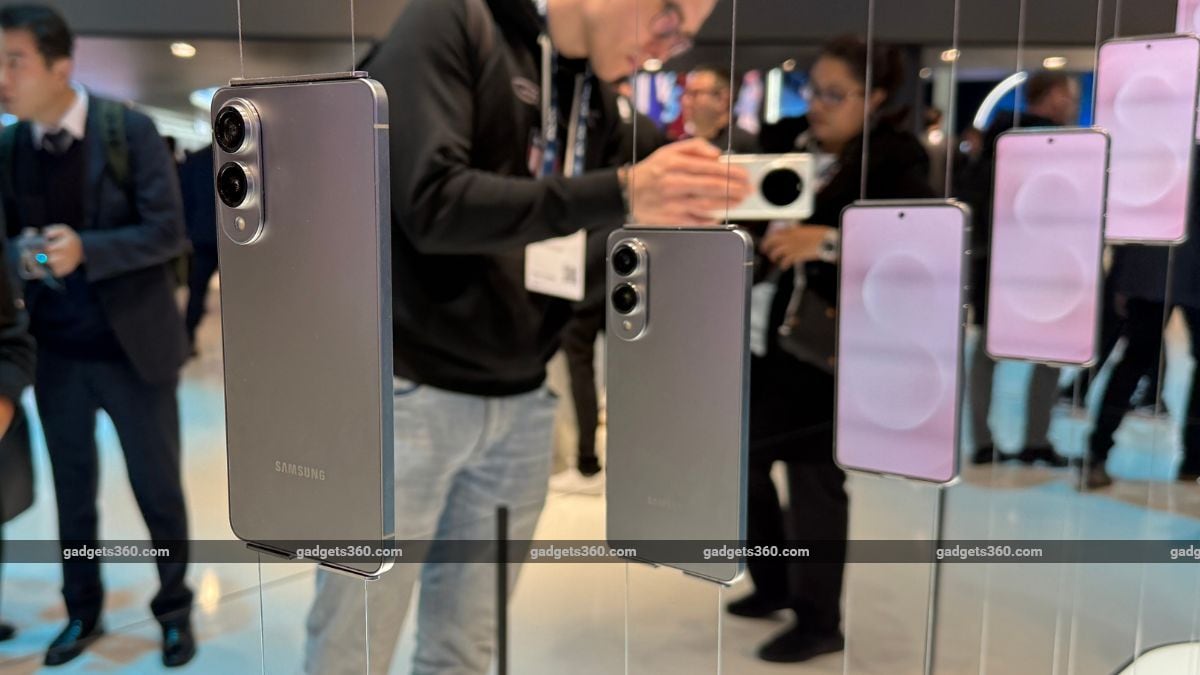
सैमसंग गैलेक्सी S25 एज कैमरा स्पेसिफिकेशन्स ऑनलाइन सामने आए हैं, साथ ही डिवाइस की बिल्ड सामग्री के विवरण के साथ। हैंडसेट को शुरू में जनवरी में फर्म के गैलेक्सी अनपैक्ड इवेंट में घोषित किया गया था, जहां कंपनी ने अनावरण किया गैलेक्सी S25गैलेक्सी S25+ और गैलेक्सी S25 अल्ट्रा। आगामी गैलेक्सी S25 एज का डिजाइन मार्च में बार्सिलोना में मोबाइल वर्ल्ड कांग्रेस (MWC) 2025 में मार्च में सामने आया था। प्रत्याशित स्मार्टफोन में मौजूदा गैलेक्सी S25 लाइनअप मॉडल के बीच सबसे पतला शरीर होने की उम्मीद है।
सैमसंग गैलेक्सी S25 एज बिल्ड विवरण (अपेक्षित)
सैमसंग गैलेक्सी S25 एज टाइटेनियम बेजल्स और कॉर्निंग गोरिल्ला ग्लास सिरेमिक 2 डिस्प्ले प्रोटेक्शन के साथ आ सकता है, एक एक्स के अनुसार डाक टिपस्टर इवान ब्लास (@evleaks) द्वारा। नई सामग्री अभी तक जारी नहीं की गई है। गैलेक्सी S25 और गैलेक्सी S25+ हैंडसेट में कॉर्निंग गोरिल्ला ग्लास विक्टस 2 प्रोटेक्शन है, जबकि गैलेक्सी S25 अल्ट्रा मॉडल को गोरिल्ला ग्लास कवच द्वारा संरक्षित किया गया है।
हाल ही में लीक ने सुझाव दिया कि सैमसंग गैलेक्सी S25 एज संभवतः 200-मेगापिक्सल प्राइमरी रियर कैमरा सेंसर, साथ ही एआई-समर्थित उत्पादकता सुविधाओं और इमेजिंग टूल से सुसज्जित होगा। हैंडसेट को 5.8 मिमी पतली होने के लिए इत्तला दे दी गई है, और इसका वजन केवल 163 ग्राम हो सकता है।
रिसाव के अनुसार, सैमसंग गैलेक्सी S25 एज को एक स्नैपड्रैगन 8 एलीट एसओसी द्वारा संचालित किया जाएगा। फोन Android 15 के आधार पर एक UI 7 के साथ जहाज जाएगा। यह है अपेक्षित 256GB और 512GB स्टोरेज कॉन्फ़िगरेशन में उपलब्ध होने के लिए।
सैमसंग गैलेक्सी S25 एज के 256GB विकल्प की लागत CAD 1,678.99 (लगभग 1,03,000 रुपये) हो सकती है, जबकि 512GB संस्करण की कीमत CAD 1,848.99 (लगभग 1,14,000 रुपये) होगी। इससे पता चलता है कि हैंडसेट की तुलना में अधिक महंगा होगा आकाशगंगा S25+ और की तुलना में कम खर्चीला आकाशगंगा S25 अल्ट्राजिसकी लागत सीएडी 1,438.99 (लगभग 88,500 रुपये) और सीएडी 1,918.99 (लगभग 1,18,000 रुपये) है।
सैमसंग गैलेक्सी S25 एज 23 मई को चीन और दक्षिण कोरिया में पहली बार लॉन्च होने की उम्मीद है, इसके बाद 30 मई को अमेरिका और अन्य बाजारों में इसका लॉन्च किया गया।
200-मेगापिक्सल के मुख्य कैमरे के साथ, सैमसंग गैलेक्सी S25 एज है टिप 12-मेगापिक्सल रियर सेकेंडरी सेंसर प्राप्त करने के लिए। यह संभवतः 12GB रैम और 6.6 इंच के डिस्प्ले का समर्थन करेगा। फोन 25W चार्जिंग सपोर्ट के साथ 3,900mAh की बैटरी पैक करेगा और उम्मीद है कि टाइटेनियम ICYBLUE, टाइटेनियम जेटब्लैक और टाइटेनियम सिल्वर कलर ऑप्शंस में आने की उम्मीद है।
-

 Internet & Social Media4 weeks ago
Internet & Social Media4 weeks agoट्विटर एक्स बन जाता है: कैसे एलोन मस्क अपने 1999 में एक ‘सब कुछ ऐप’ बनाने के अपने सपने की ओर काम कर रहा है
-

 AI & Automation4 weeks ago
AI & Automation4 weeks agoGoogle चैट में मिथुन कार्यक्षेत्र उपयोगकर्ताओं के लिए रोल आउट, अपठित वार्तालापों को संक्षेप में प्रस्तुत कर सकता है
-
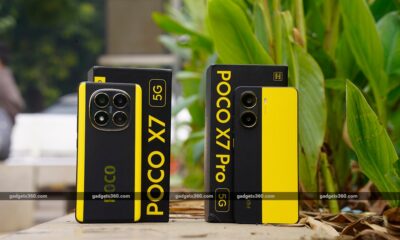
 Tech News4 weeks ago
Tech News4 weeks agoPoco X7 and X7 Pro Review: The Mid-Range Marvels
-
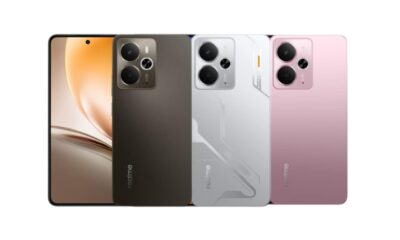
 Tech News1 month ago
Tech News1 month agoRealme 14 5g स्नैपड्रैगन 6 जनरल 4 SOC के साथ, बाईपास चार्जिंग लॉन्च: मूल्य, सुविधाएँ
-
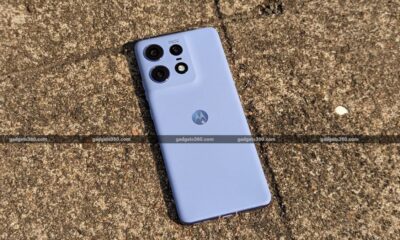
 Tech News1 month ago
Tech News1 month agoमोटोरोला एज 60 प्रो की लीक हुई छवियां कथित तौर पर एक नए बटन को शामिल करने की ओर संकेत करती हैं
-
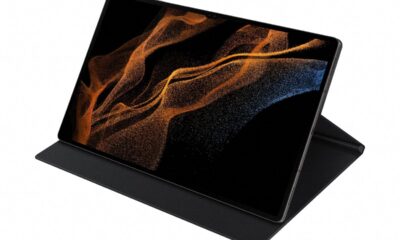
 Gadgets1 month ago
Gadgets1 month agoसैमसंग गैलेक्सी टैब S9+ विनिर्देशों geekbench पर टैबलेट सतहों के रूप में रिसाव: सभी विवरण
-
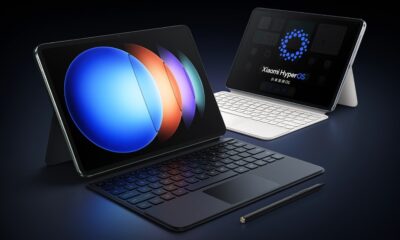
 Gadgets1 month ago
Gadgets1 month agoXiaomi Pad 6s Pro ने 22 फरवरी को लॉन्च करने की पुष्टि की; डिजाइन, प्रमुख विनिर्देशों का पता चला
-
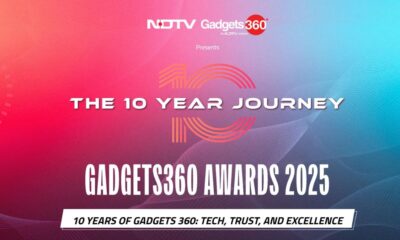
 Tech News1 month ago
Tech News1 month agoNDTV Gadgets 360 Awards 2025: Check out the Nominations for India’s Most Trusted Award Show
-
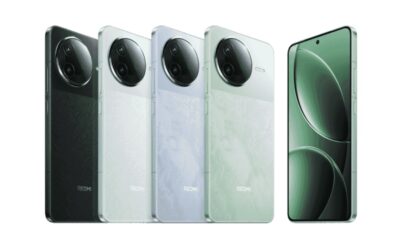
 Tech News2 months ago
Tech News2 months agoPOCO F7 प्रो कुंजी सुविधाओं की सतह ऑनलाइन; एक स्नैपड्रैगन 8 जनरल 3 एसओसी मिल सकता है
-
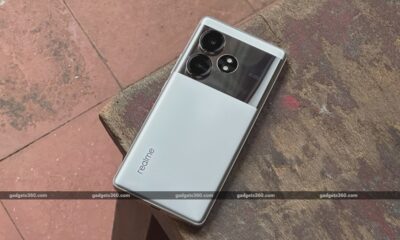
 Tech News1 month ago
Tech News1 month agoRealme gt 7t ने कार्यों में होने के लिए इत्तला दे दी; एनएफसी समर्थन की पेशकश करने के लिए कहा
-
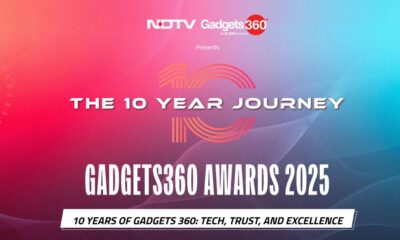
 AI & Automation1 month ago
AI & Automation1 month agoNDTV Gadgets 360 Awards 2025: Check out the Nominations for India’s Most Trusted Award Show
-
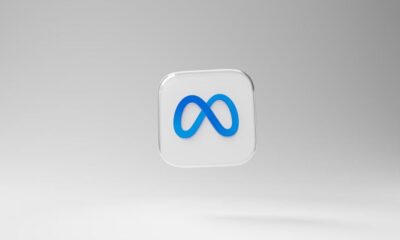
 Internet & Social Media2 months ago
Internet & Social Media2 months agoमेटा ने कथित तौर पर AI उपयोगकर्ताओं के ‘सैकड़ों हजारों’ को फेसबुक, इंस्टाग्राम पर जोड़ने की योजना बनाई है
-
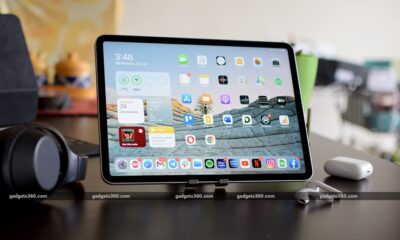
 Gadgets2 months ago
Gadgets2 months agoवैश्विक टैबलेट शिपमेंट 2024 में रिबाउंड किया गया क्योंकि Apple शीर्ष स्थान को बरकरार रखता है: रिपोर्ट
-
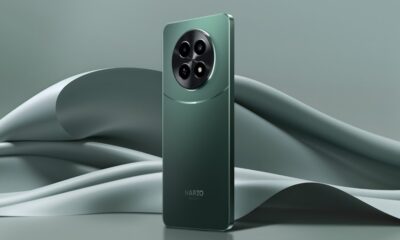
 Tech News2 months ago
Tech News2 months agoRealme Narzo 80x 5g इंडिया वेरिएंट रैम, स्टोरेज कॉन्फ़िगरेशन और रंग विकल्प लीक
-
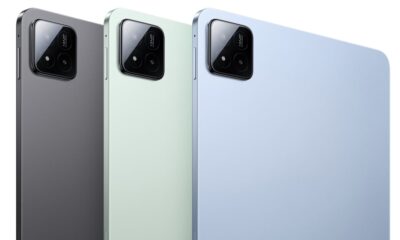
 Gadgets2 months ago
Gadgets2 months agoXiaomi Pad 7 भारतीय संस्करण geekbench पर दिखाई देता है; स्नैपड्रैगन 7+ जनरल 3 सोको प्राप्त करने की संभावना है
-
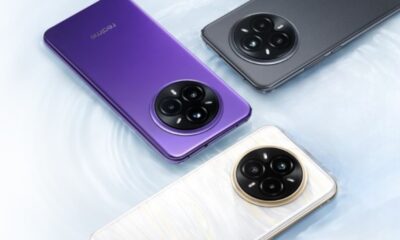
 Tech News1 month ago
Tech News1 month agoRealme 14 Pro+ 5G अब भारत में 512GB स्टोरेज के साथ उपलब्ध है: मूल्य, उपलब्धता
-
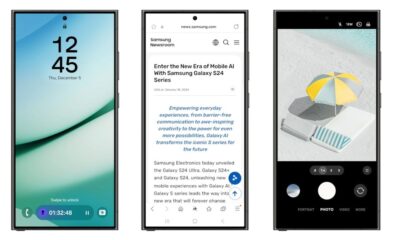
 Tech News2 months ago
Tech News2 months agoसैमसंग वन यूआई 7 बीटा गैलेक्सी जेड फ्लिप 6, गैलेक्सी जेड फोल्ड 6 में भारत, यूएस, और बहुत कुछ का विस्तार करता है
-
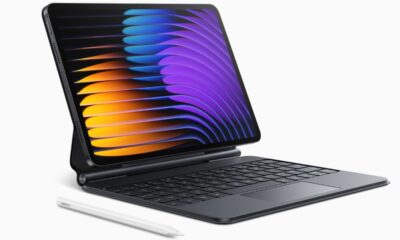
 Gadgets2 months ago
Gadgets2 months agoXiaomi Pad 7, Xiaomi Pad 7 Pro 11.2-इंच 3.2K डिस्प्ले के साथ, हाइपरोस 2 UI लॉन्च: मूल्य, विनिर्देश
-
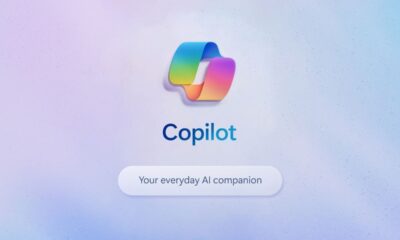
 AI & Automation1 month ago
AI & Automation1 month agoMicrosoft कथित तौर पर Microsoft 365 सदस्यता और लंबी पैदल यात्रा की कीमतों के साथ Copilot AI को बंडल करना
-
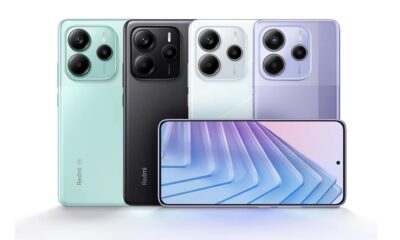
 Tech News1 month ago
Tech News1 month agoXiaomi Holi बिक्री Redmi Note 14 5G, नोट 13 श्रृंखला और अन्य फोन पर छूट लाती है


